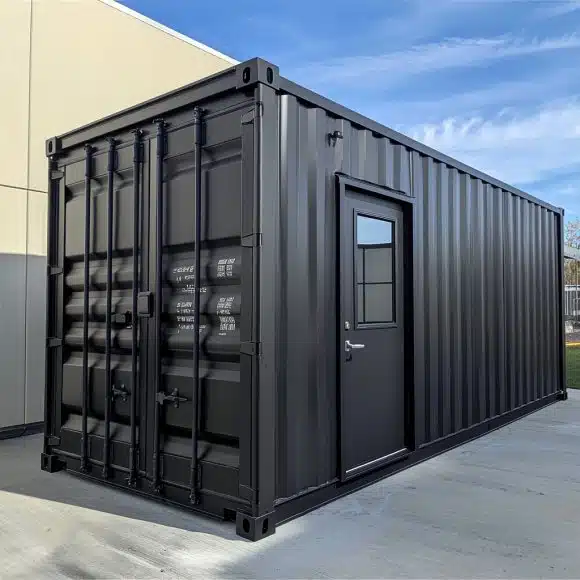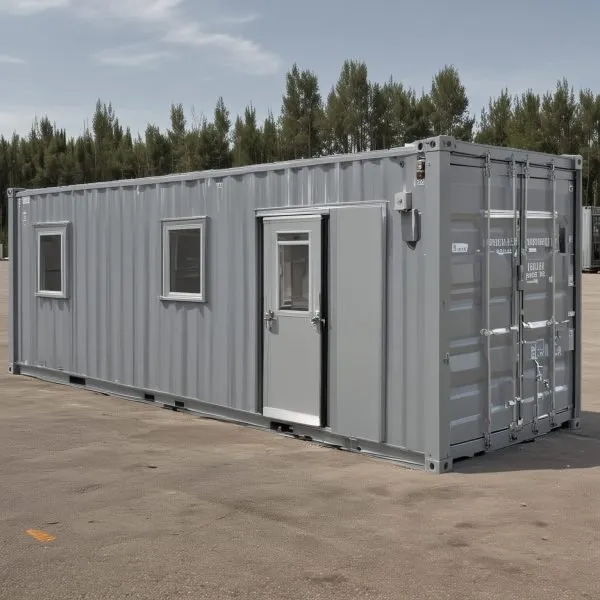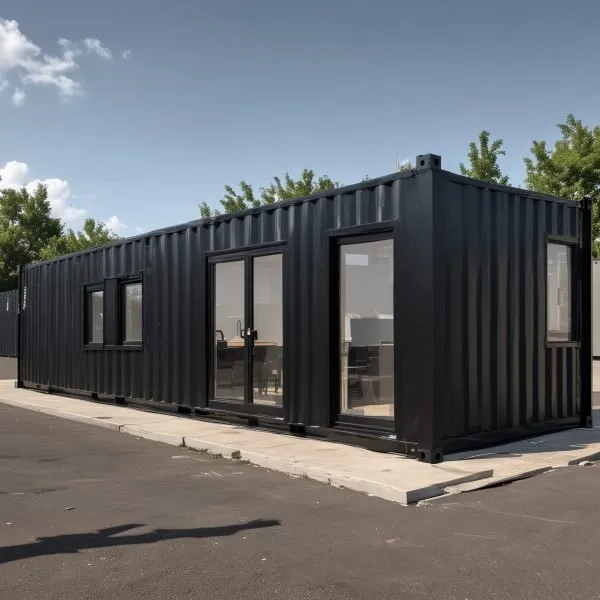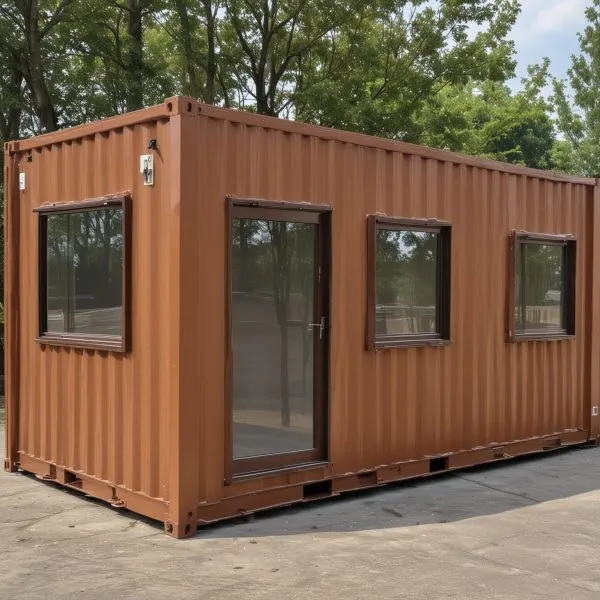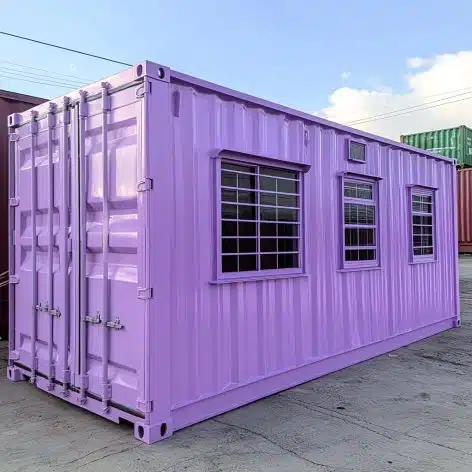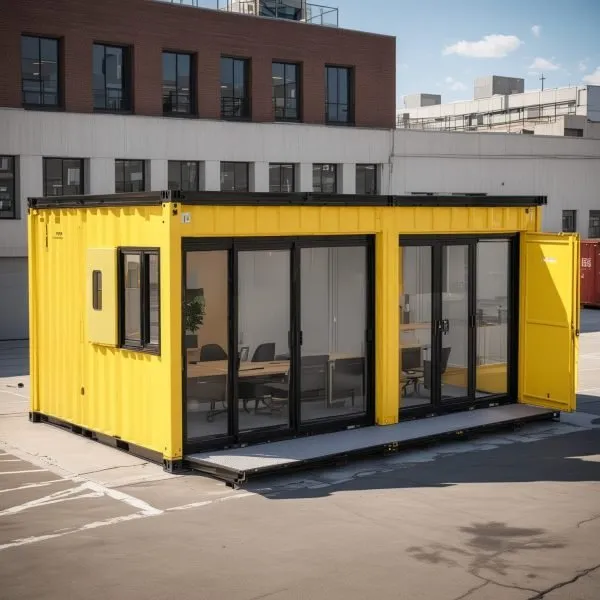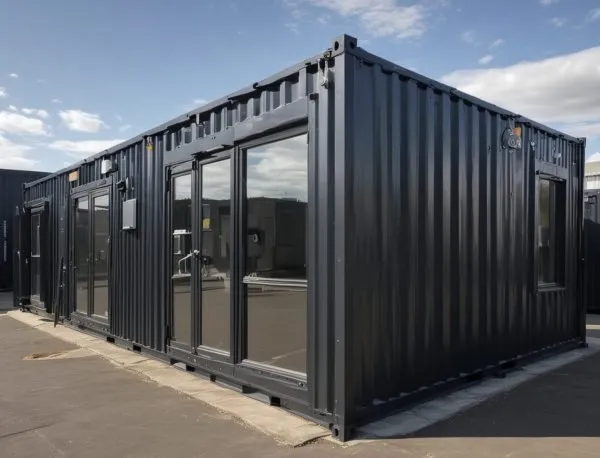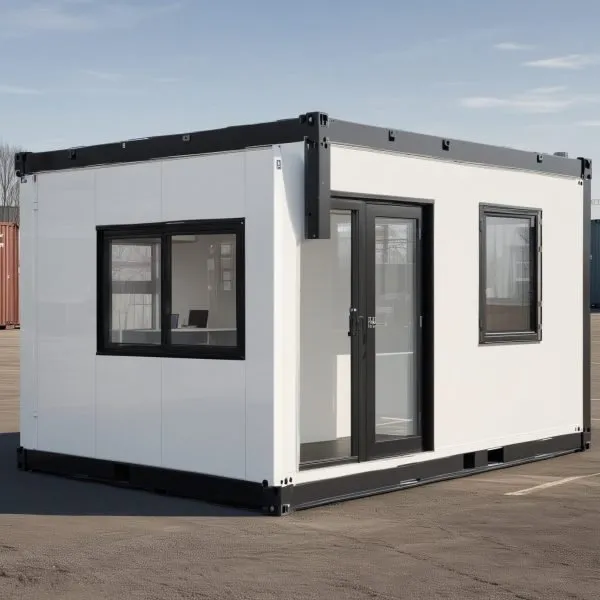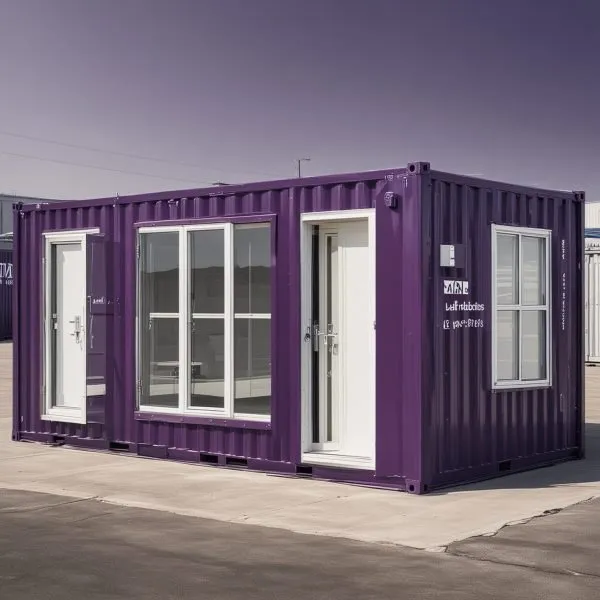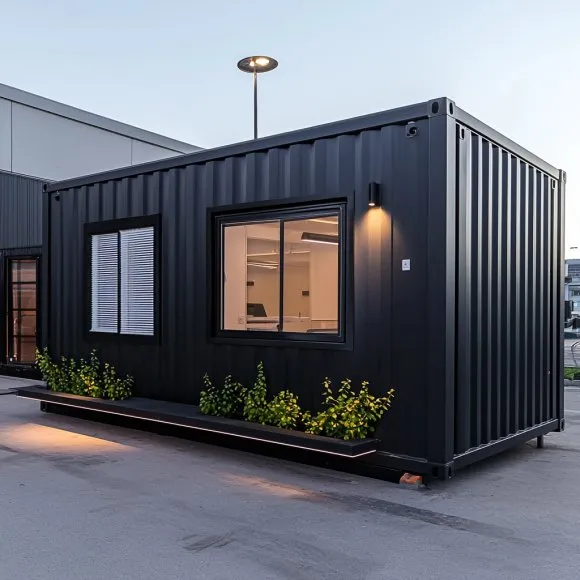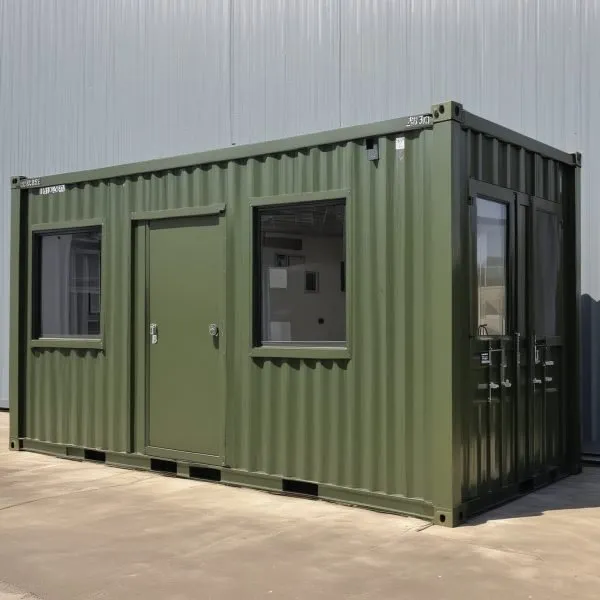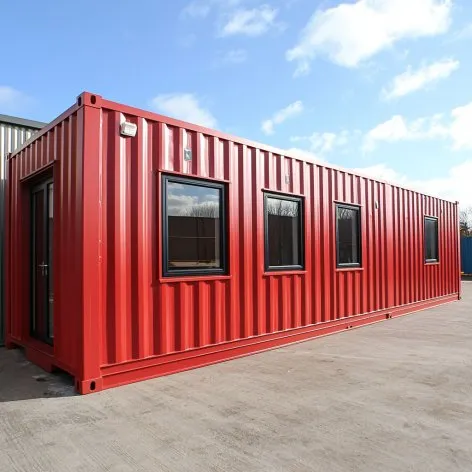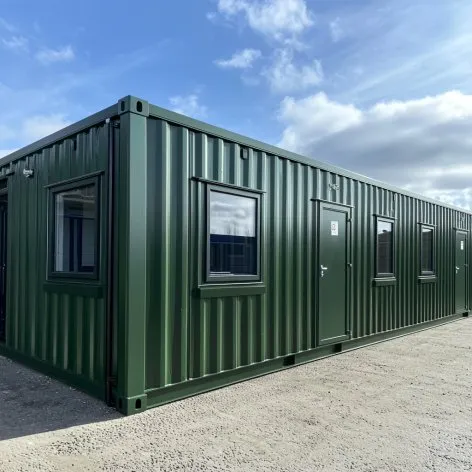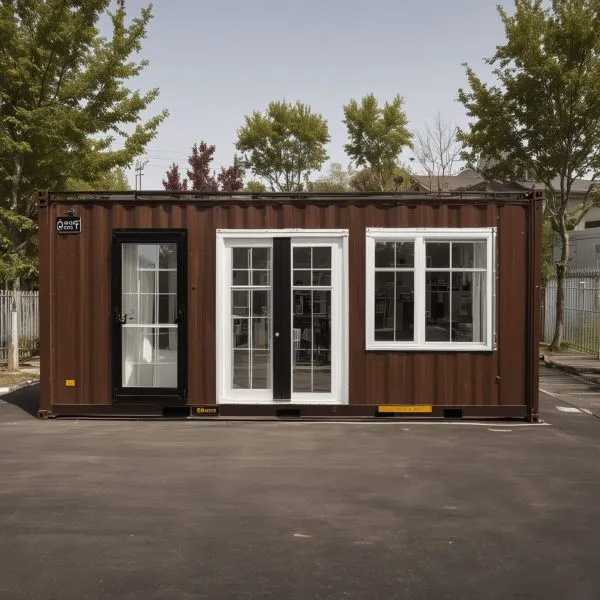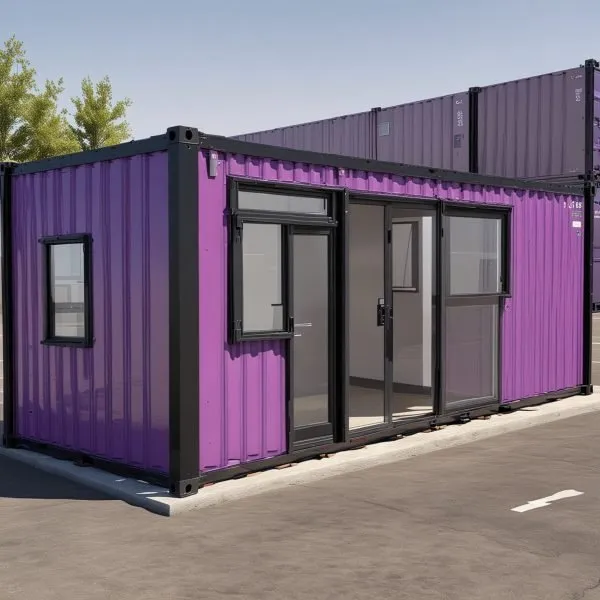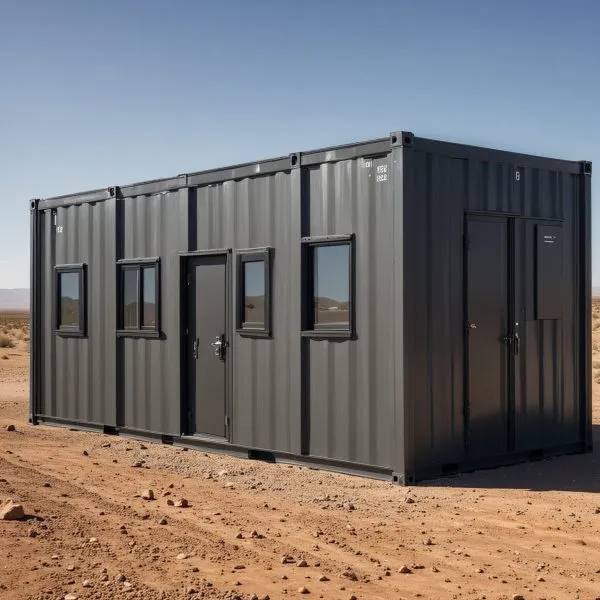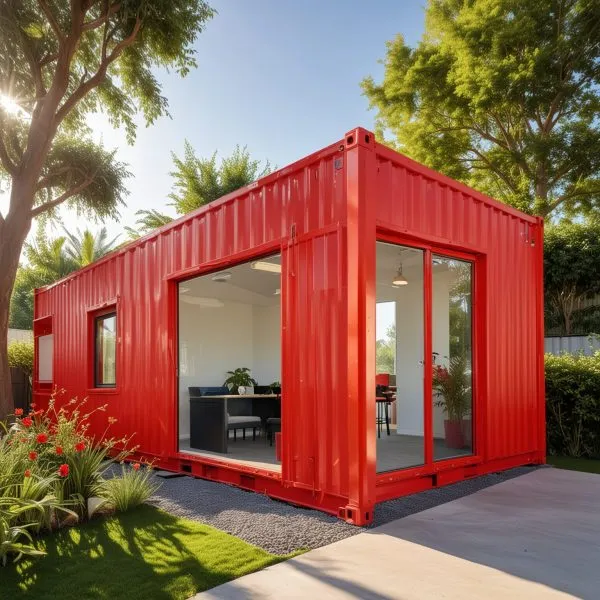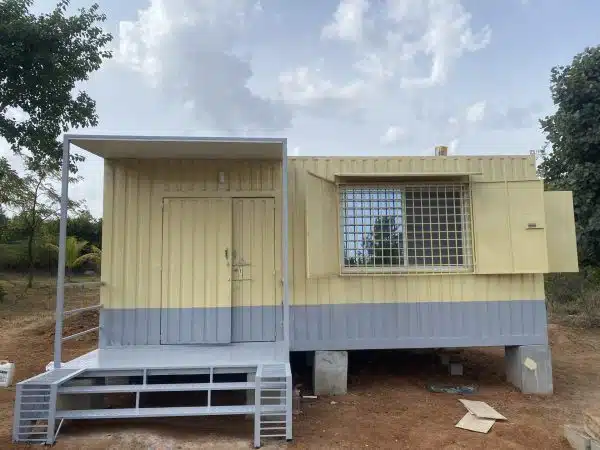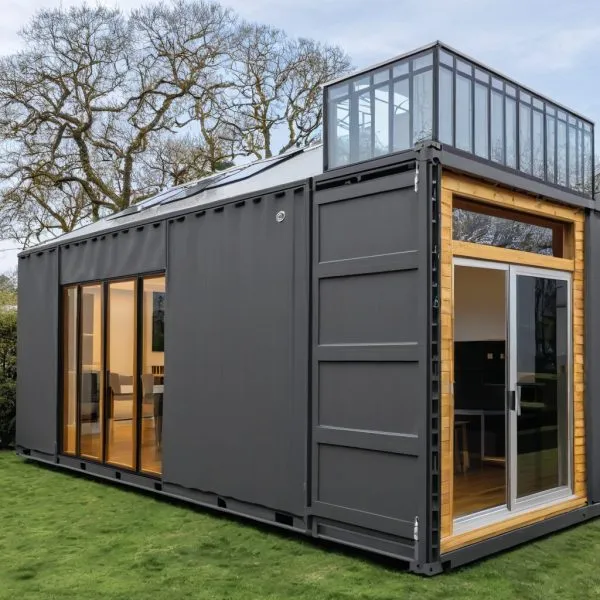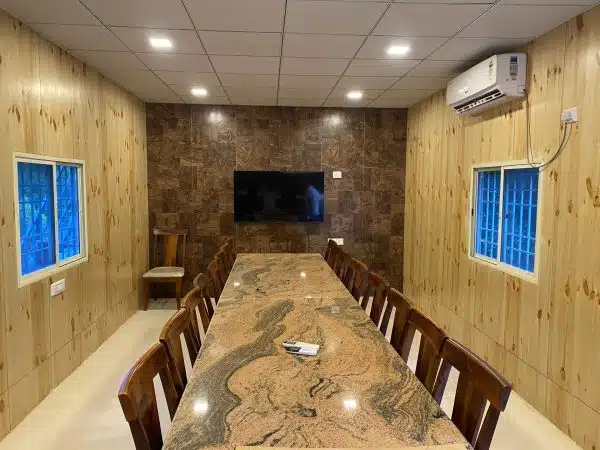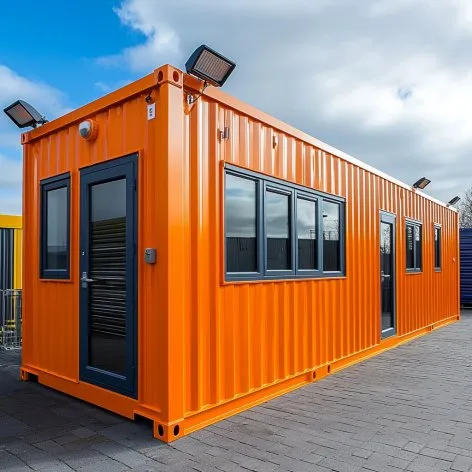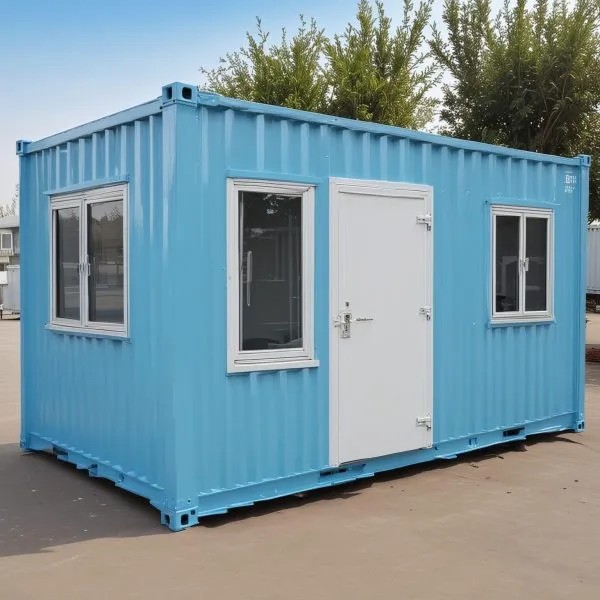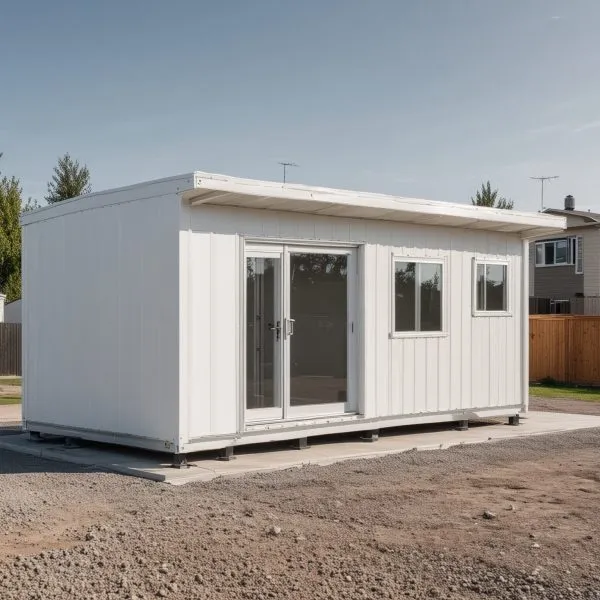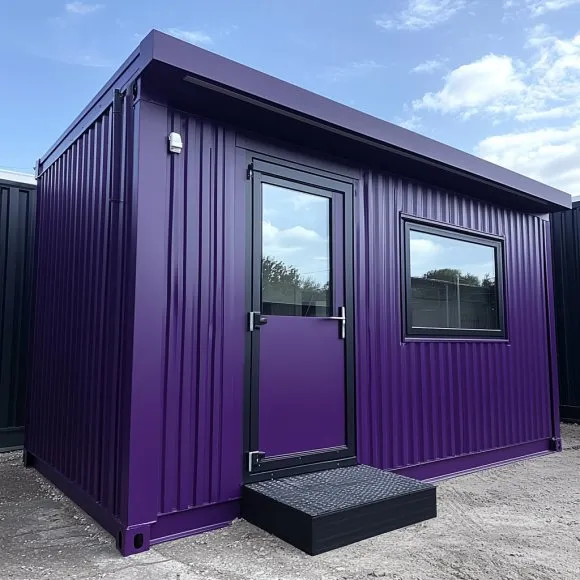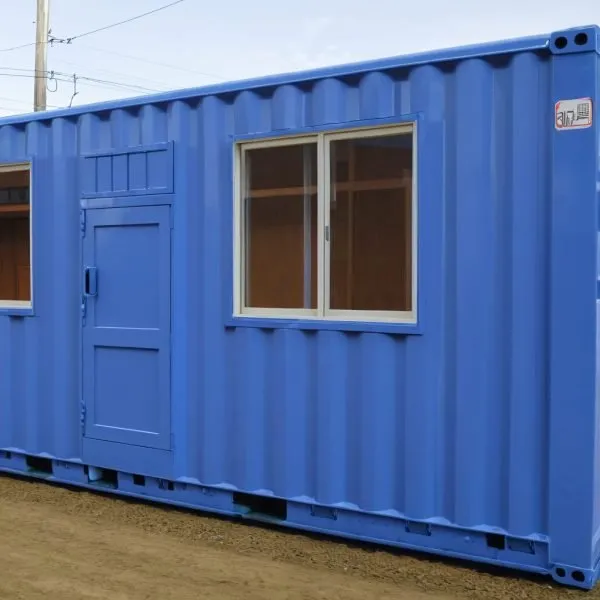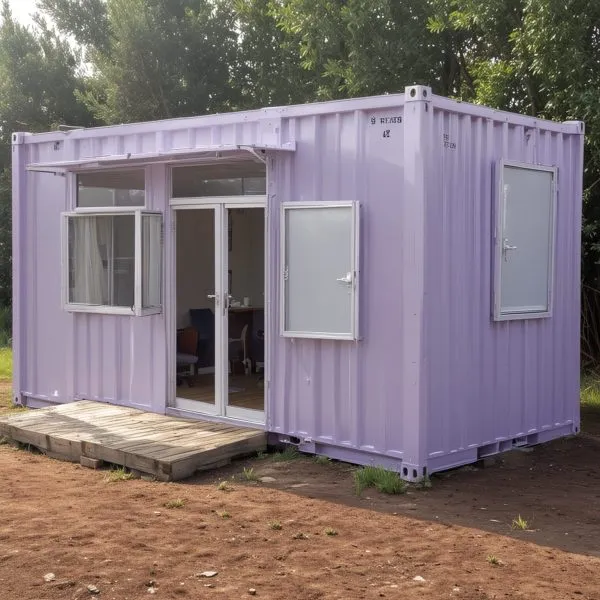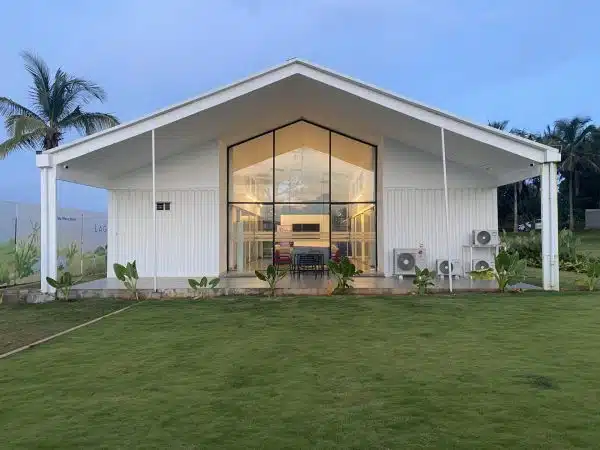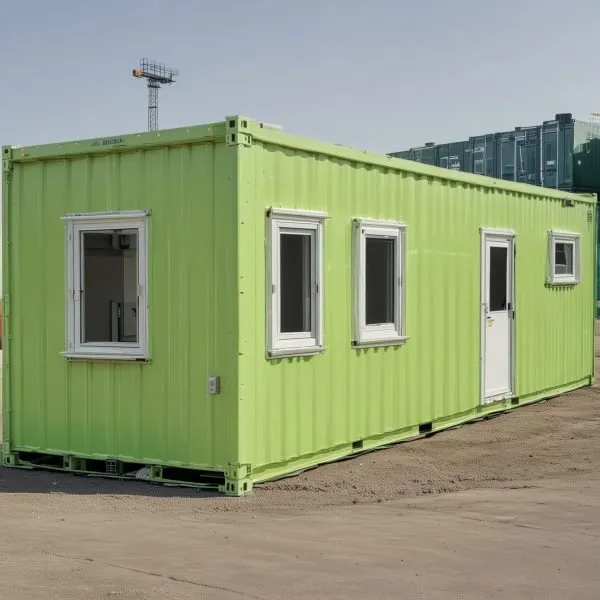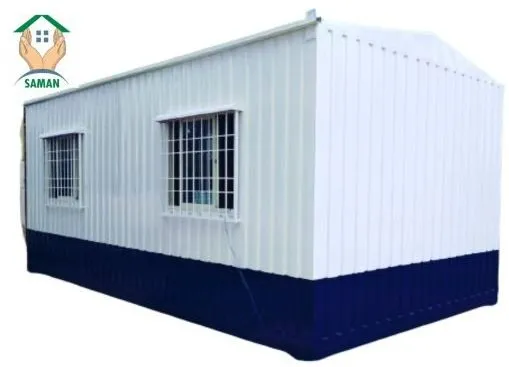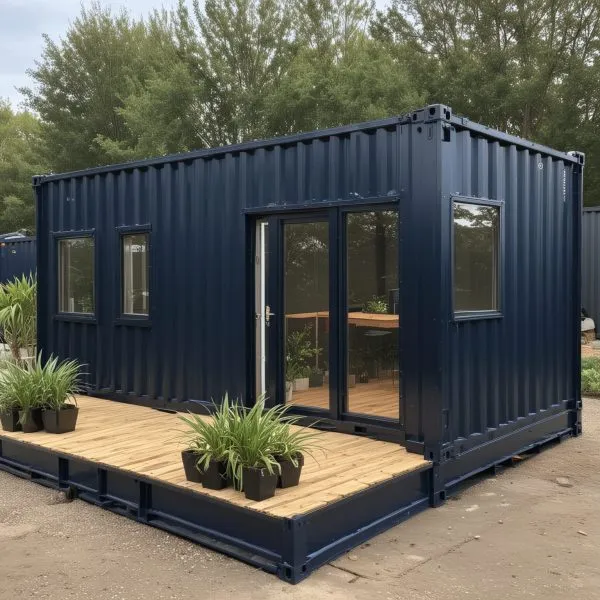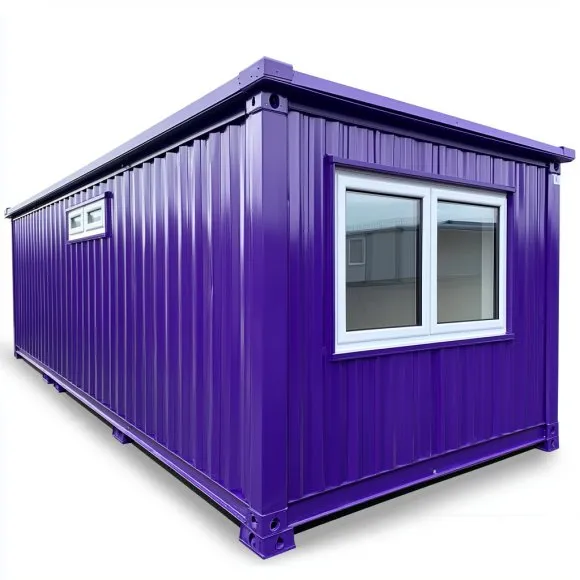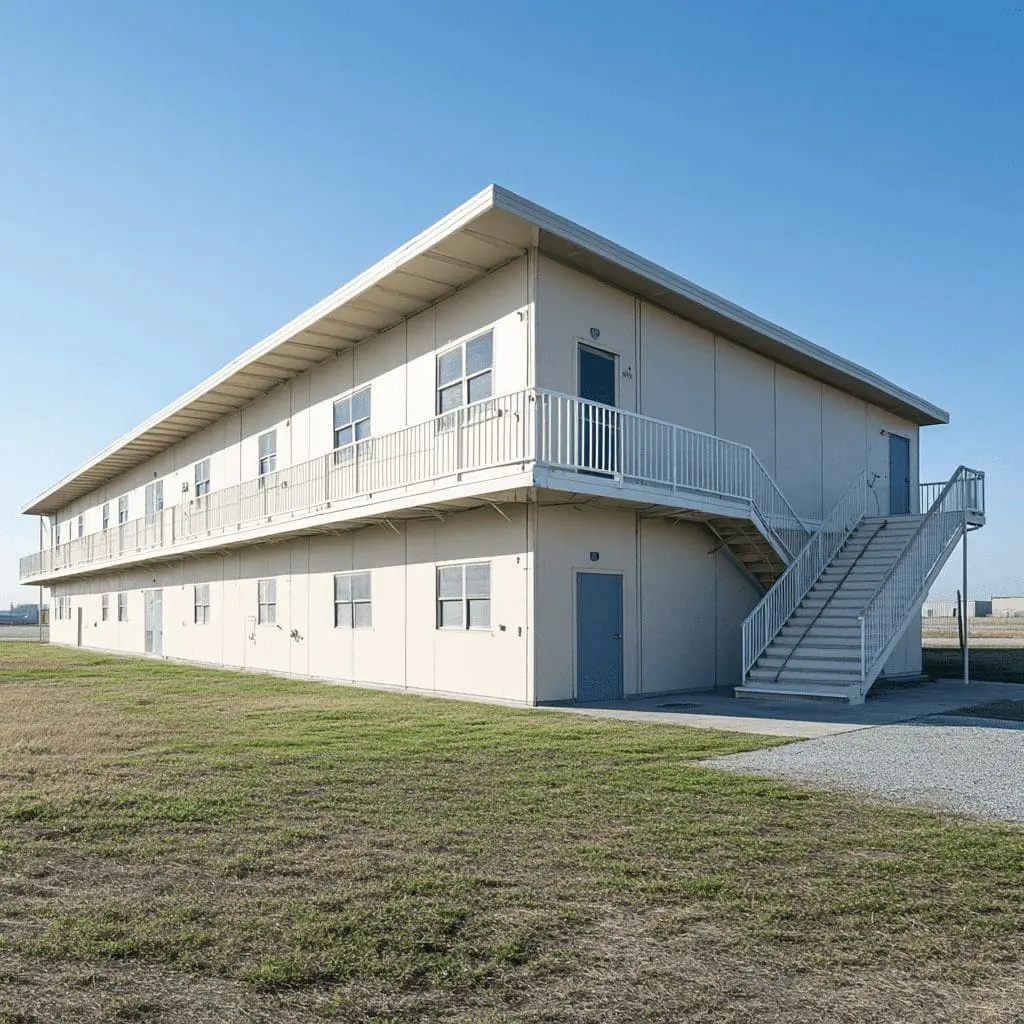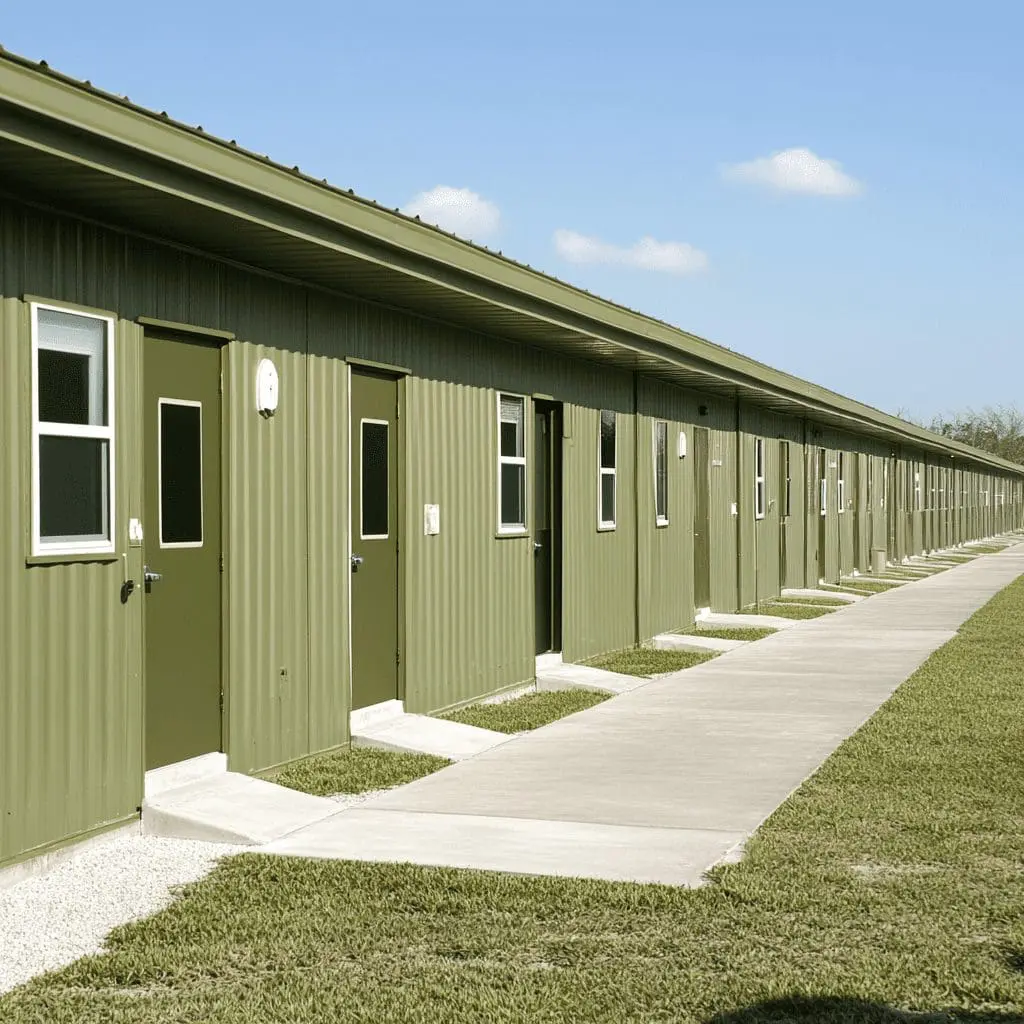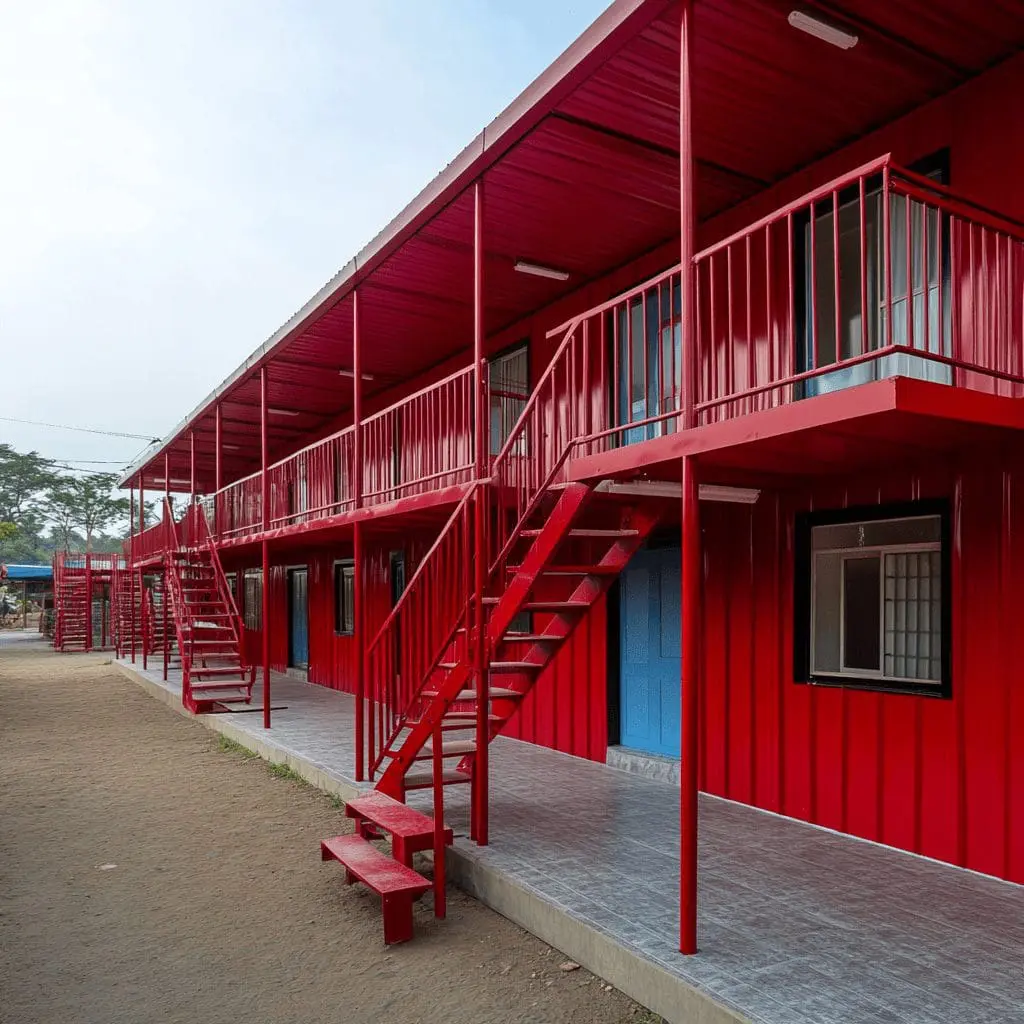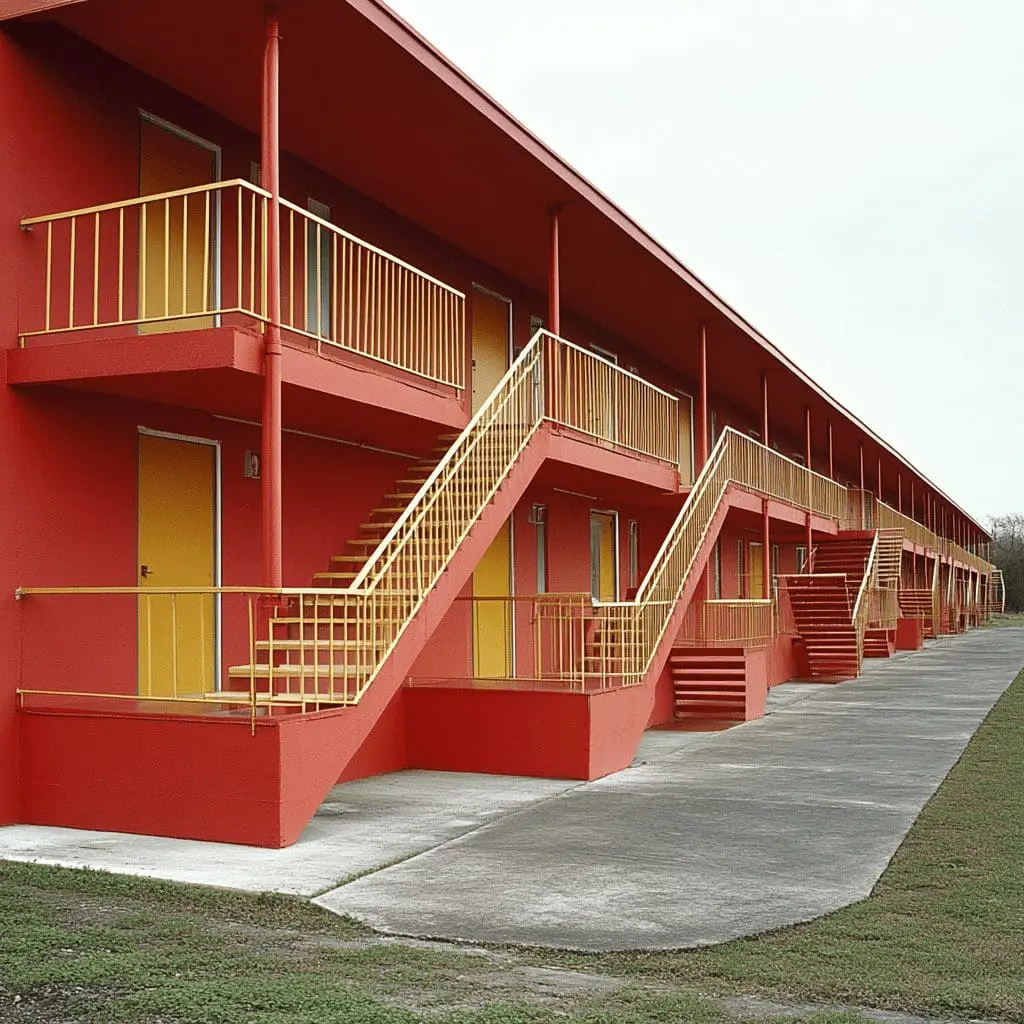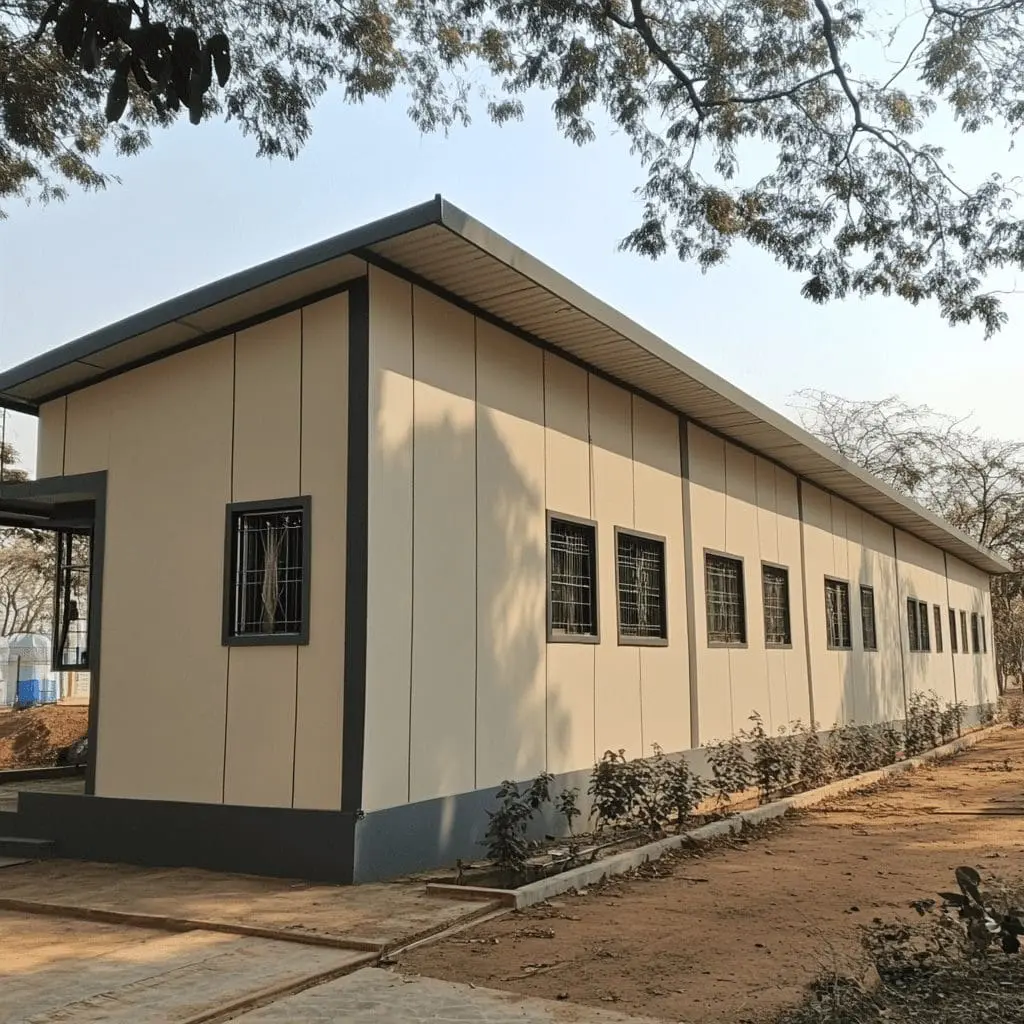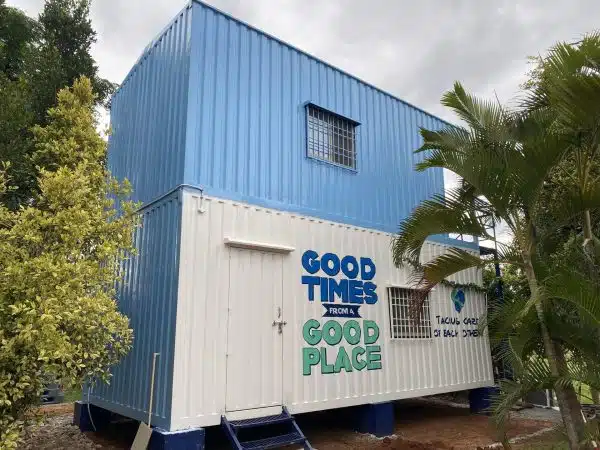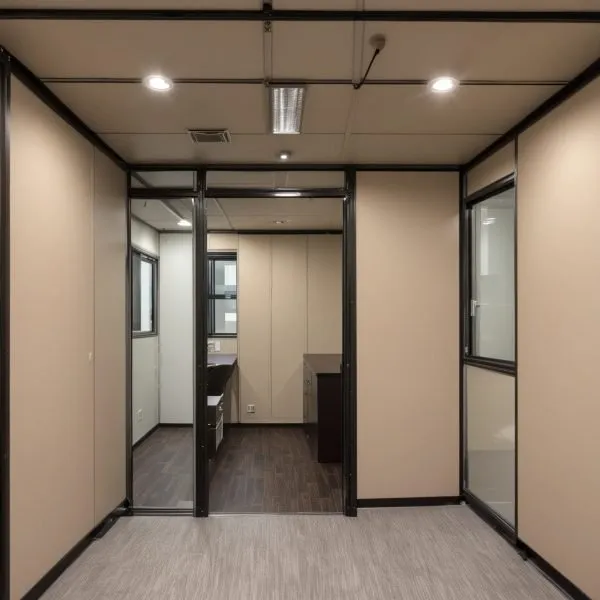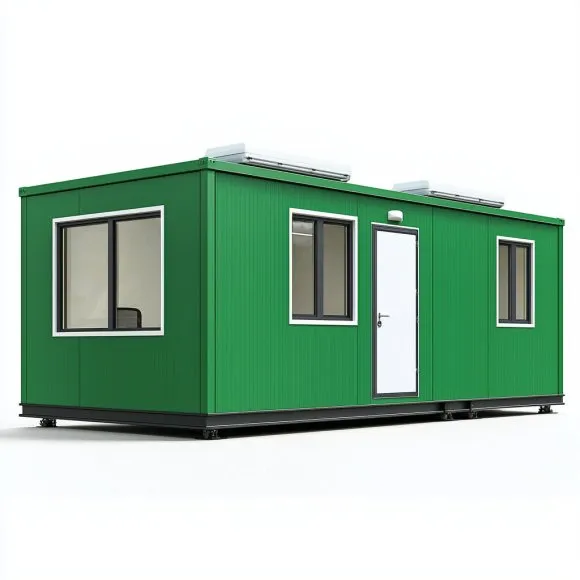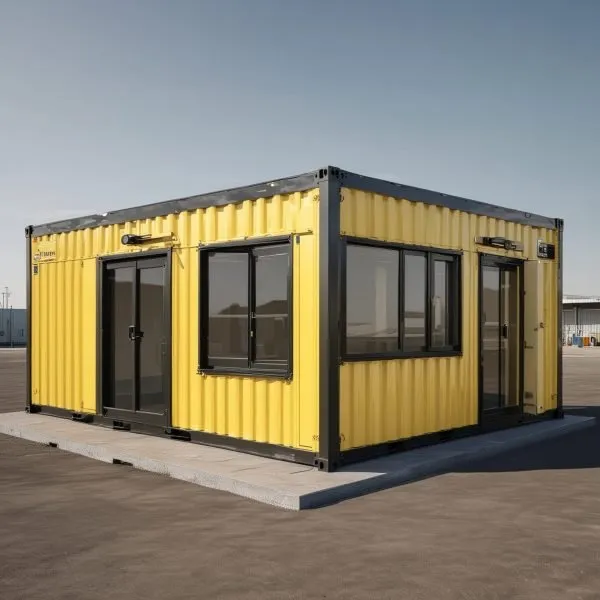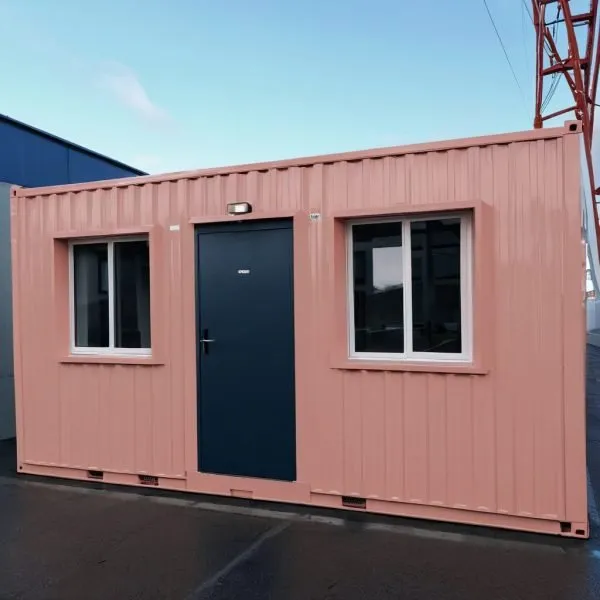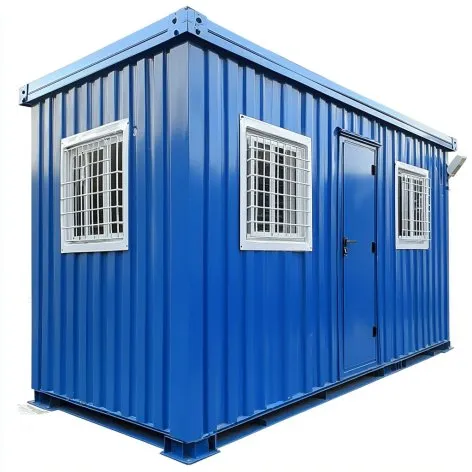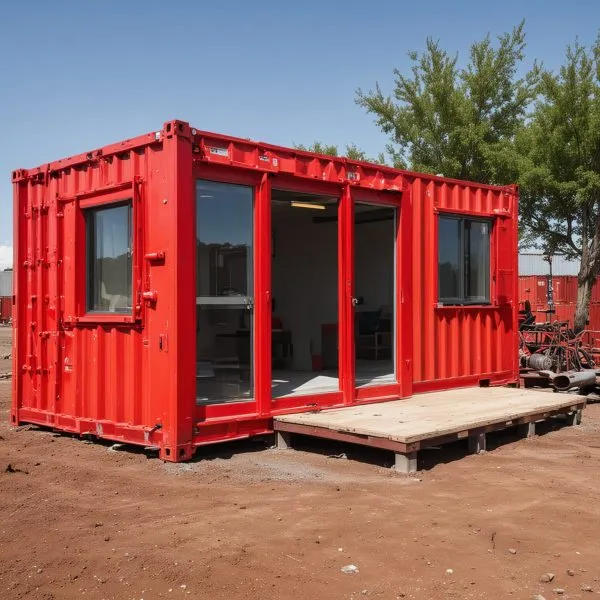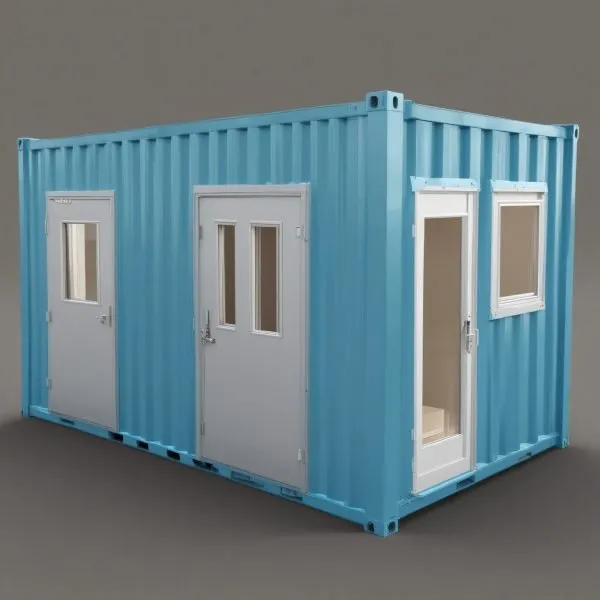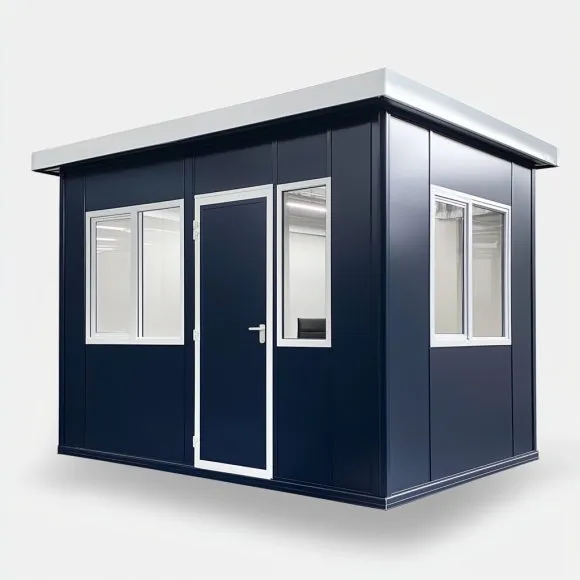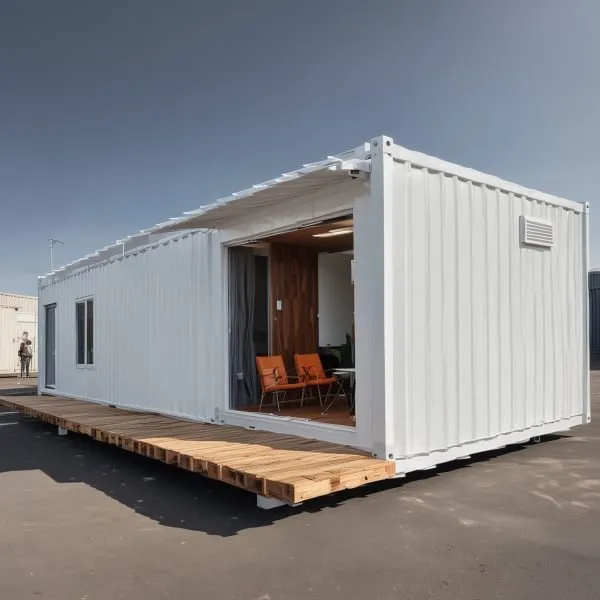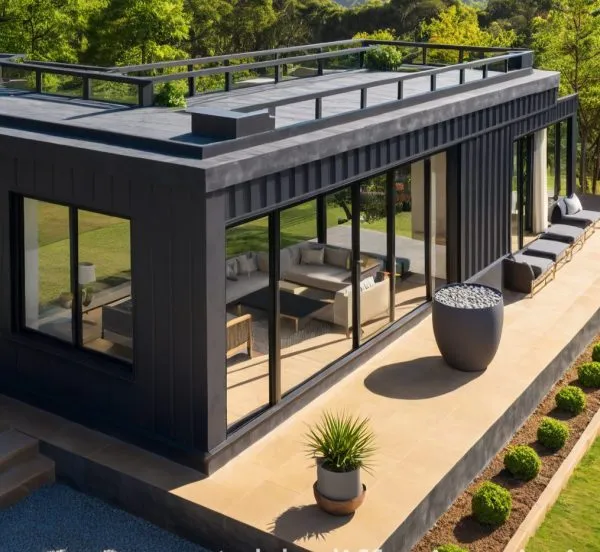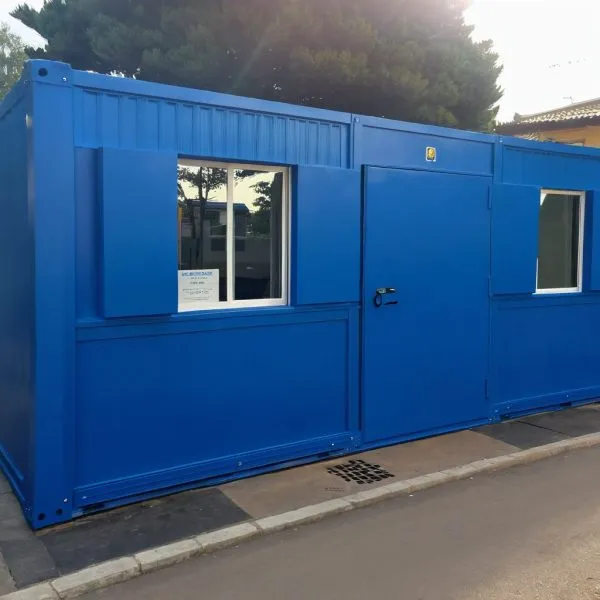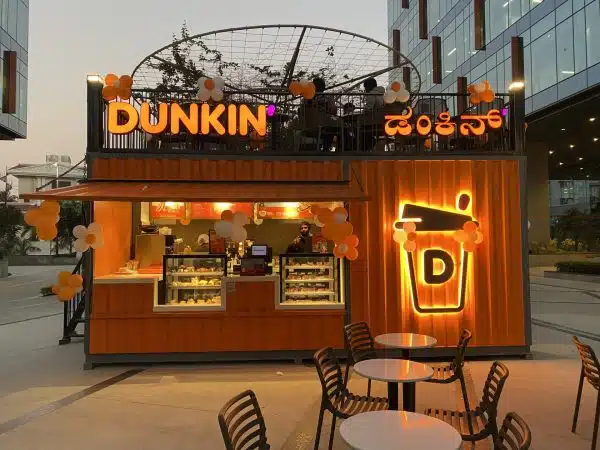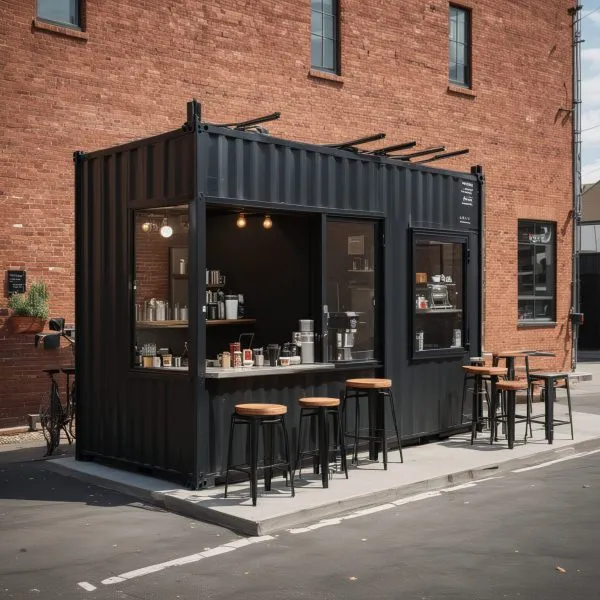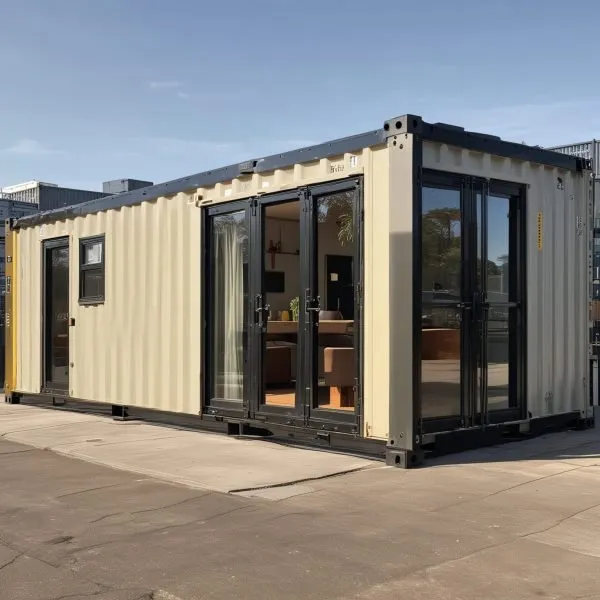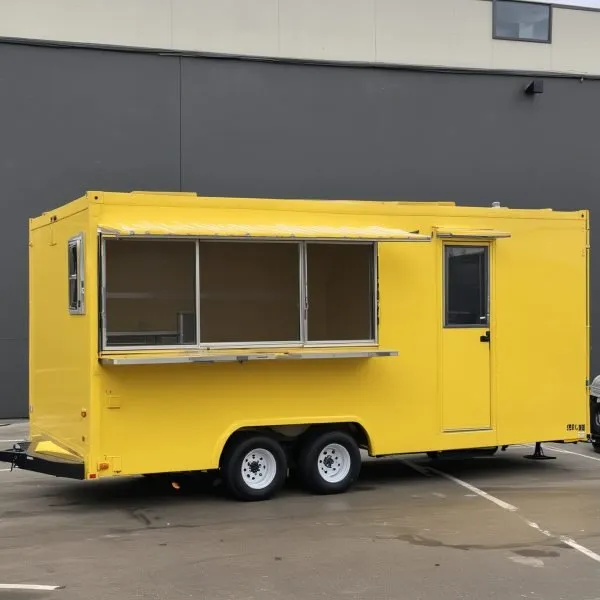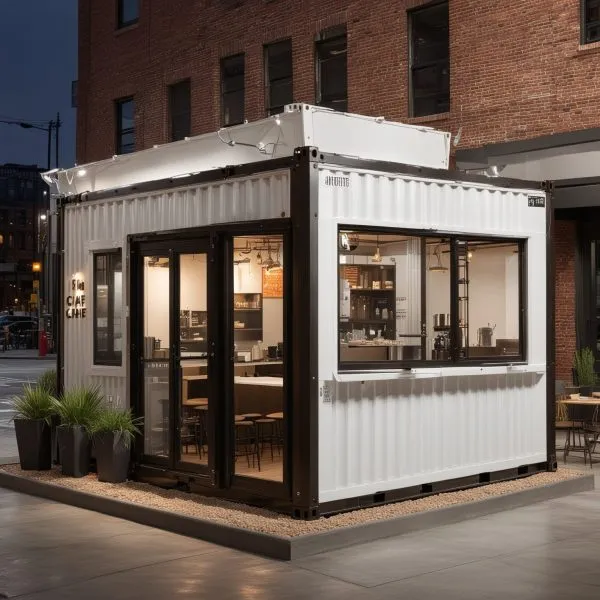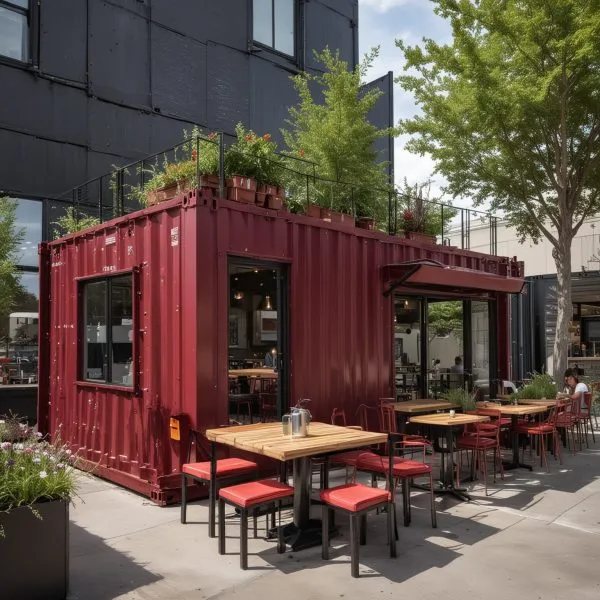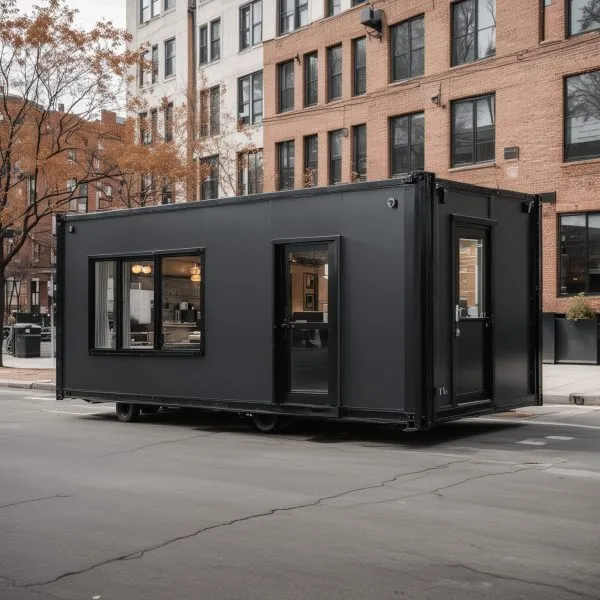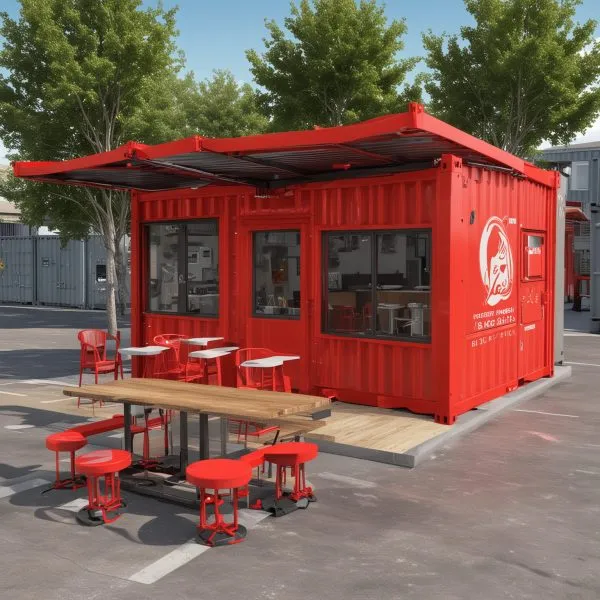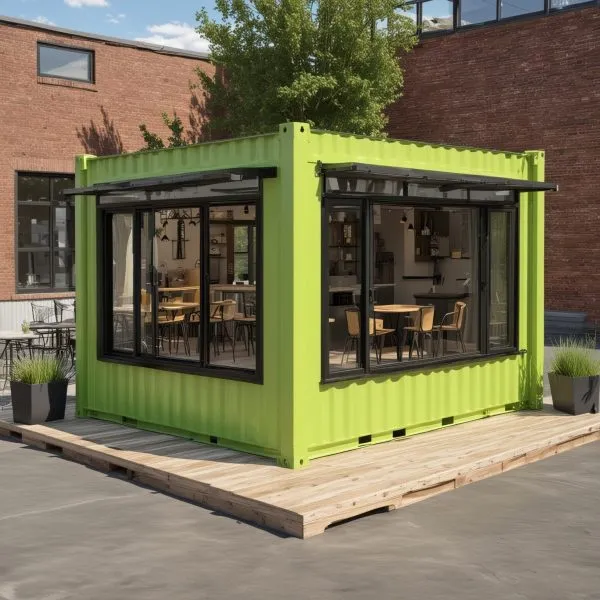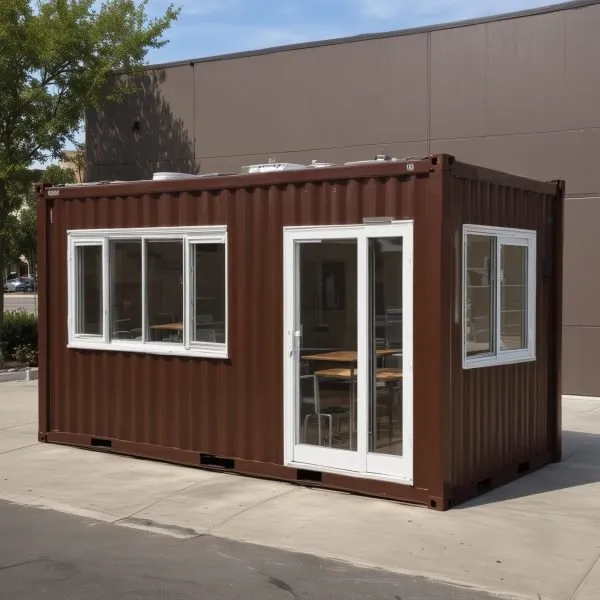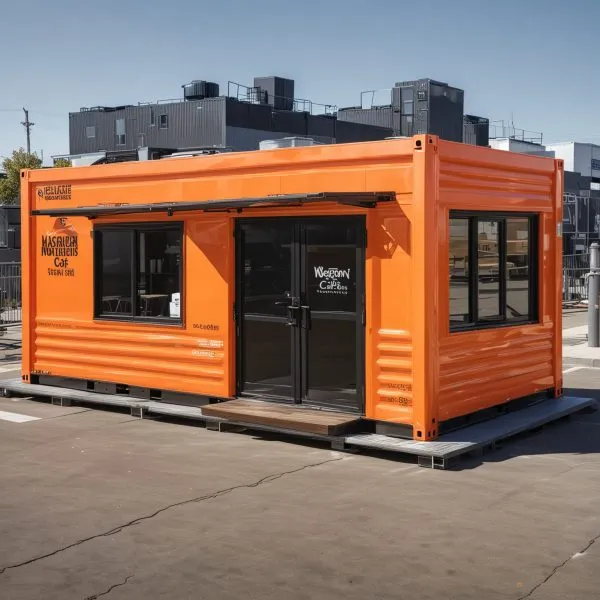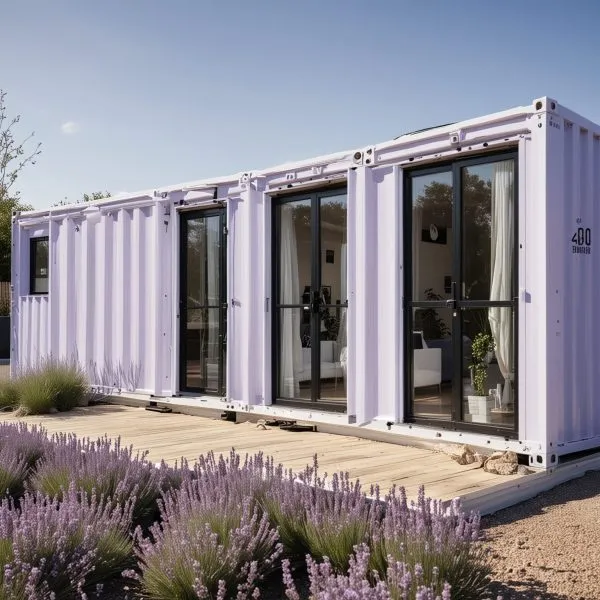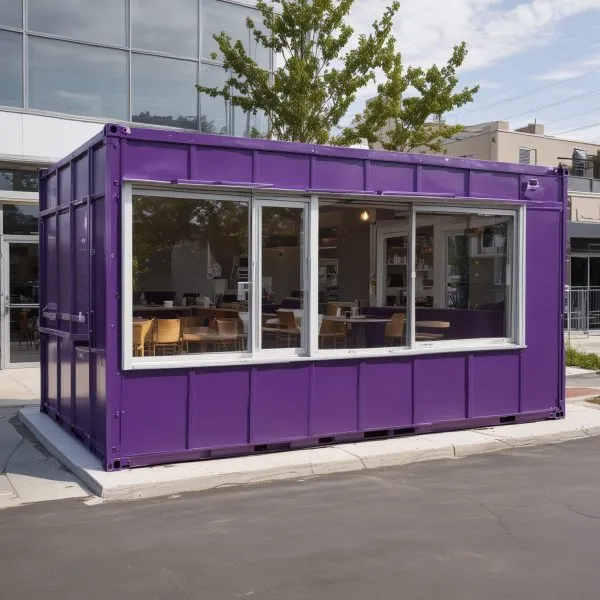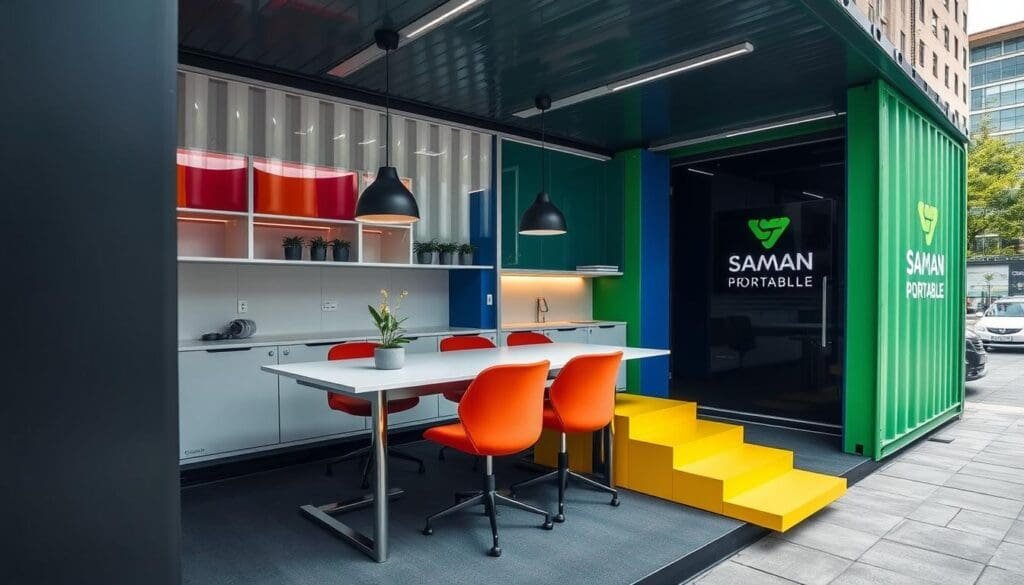Shipping Container Office Layouts: Modern Designs for Efficient Work Environments
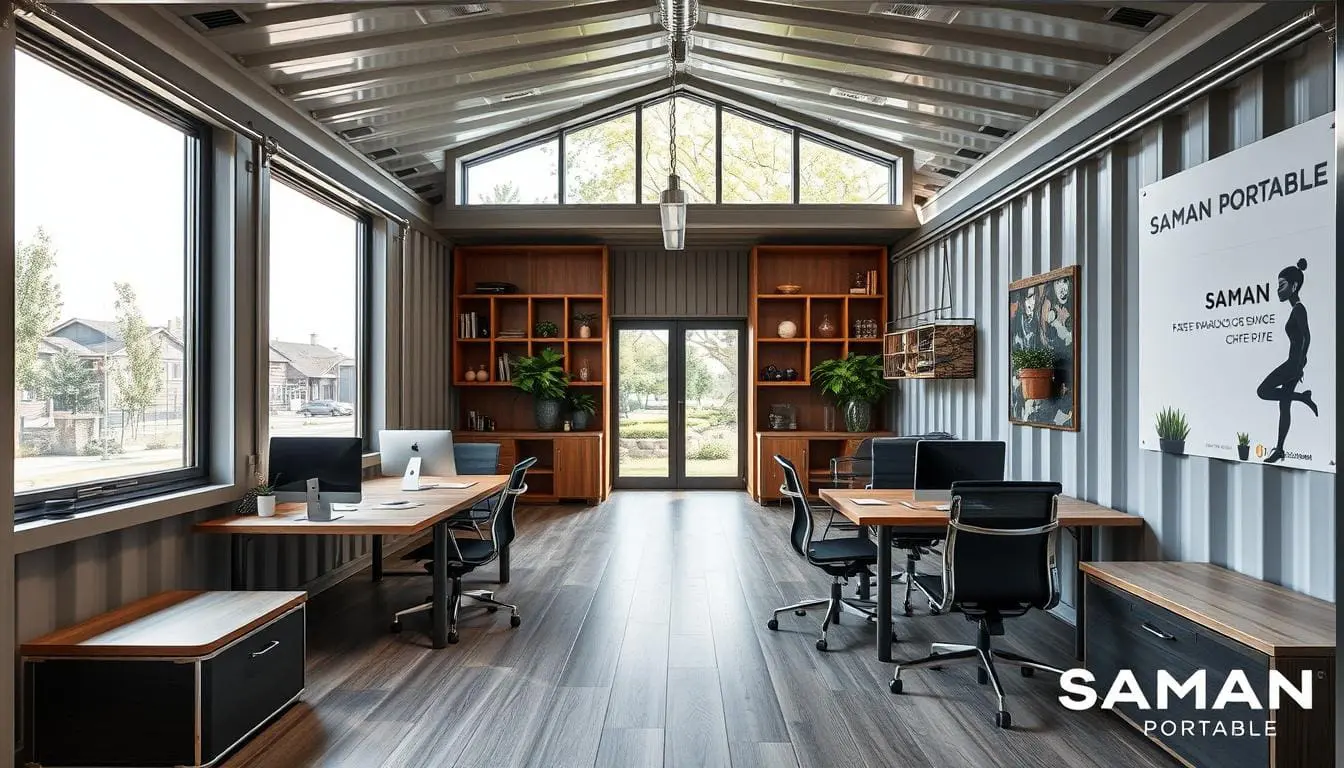
Shipping container offices are changing the game for businesses. They are affordable, sustainable, and flexible. Companies like Box, Stack Exchange, and Bloomberg have already seen the benefits.
In cities like Bangalore, Chennai, and Hyderabad, the need for new office spaces is growing. Container office makers in India are stepping up with customizable options. Startups and small businesses are finding these solutions appealing.
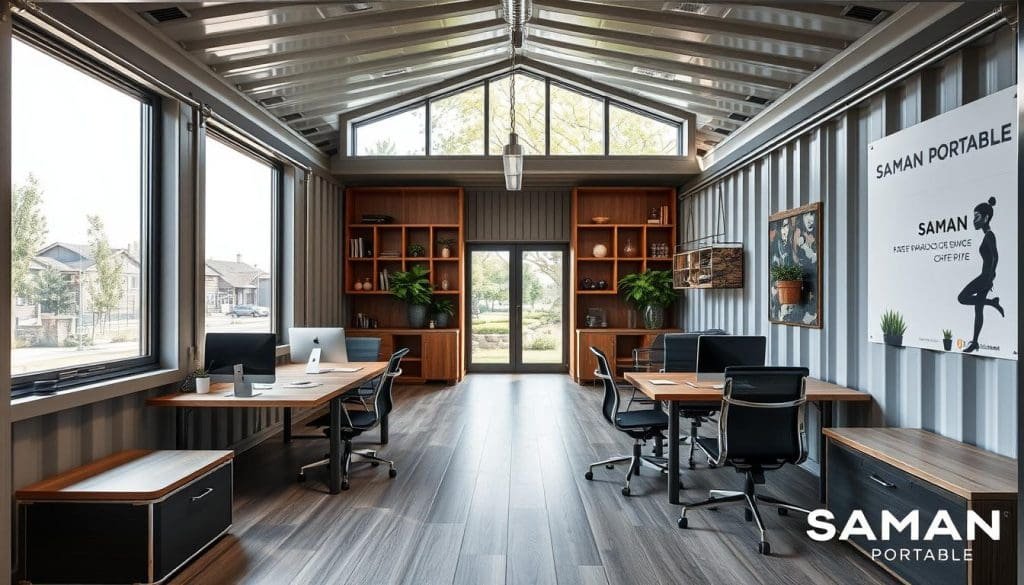
So, why are shipping container offices so popular? How can they change our approach to workspaces? Let’s explore the world of container-based offices and find out how to create modern, efficient work environments.
Key Takeaways
- Shipping container offices offer cost-effective and sustainable workspace solutions for businesses in India and globally.
- Container office designs provide flexibility and customization options to meet the evolving needs of modern workplaces.
- Portable and modular container offices enable easy expansion and relocation, making them ideal for growing companies.
- Eco-friendly materials and energy-efficient features in container offices contribute to lower operating costs and a reduced environmental impact.
- Container office layouts can be strategically designed to foster collaboration and productivity within the workspace.
Introduction to Container Office Architecture
Office design has changed a lot, with shipping container plans leading the way. These plans turn old shipping containers into modern workspaces. They are not only affordable but also help make work areas more efficient and green.
Evolution of Container Workspace Design
Container office plans have grown from simple shipping containers to advanced modular designs. These designs mix affordability with quality, meeting the needs of many businesses. You can choose from used or new one-way containers, offering flexibility in cost and customization.
Benefits of Container Offices in Modern Business
- Mobility and Flexibility: Container office plans are easy to move and change, perfect for sites, remote areas, or growing businesses.
- Cost-Efficiency: They are cheaper than building a traditional office, saving money in the long run.
- Sustainability: Using old shipping containers is good for the environment, fitting into the trend of green building.
More businesses are choosing container office plans and modular designs for their offices. These options are practical, cost-effective, and eco-friendly. They can easily add modern features and technology, making workspaces efficient and up-to-date.
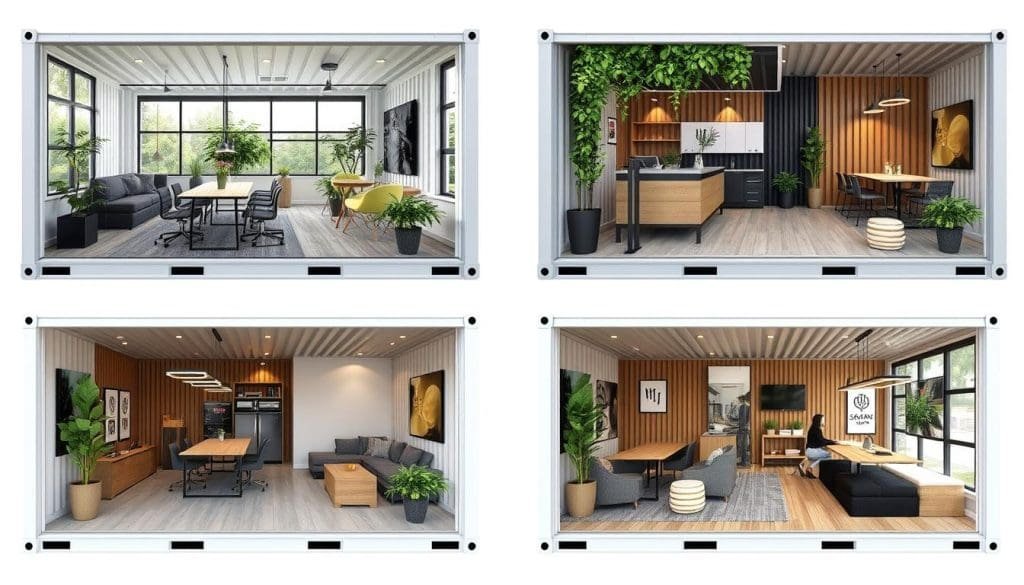
Shipping Container Office Layouts: Core Design Principles
Designing shipping container offices focuses on using space well and making work areas comfortable. Important aspects include insulation, air flow, and wiring. The layout should fit office needs while keeping employees happy and productive.
For 20ft container offices, planning space is key. These small spaces need smart placement of desks, storage, and areas for everyone. On the other hand, 40ft containers offer more room. They can have bigger setups with space for private offices, team areas, and break rooms.
- Focus on natural light and air flow for a comfy and productive work space
- Flexible work areas to meet different business needs and grow
- Adding storage like shelves and drawers to keep things organized and clutter-free
The main design rules for shipping container offices are about being useful, comfortable, and flexible. This makes sure both 40 ft container office layout plans and 20 ft container office layout plans meet today’s business needs.
Explore our detailed container office plans to design flexible, cost-efficient workspaces tailored to your business needs.
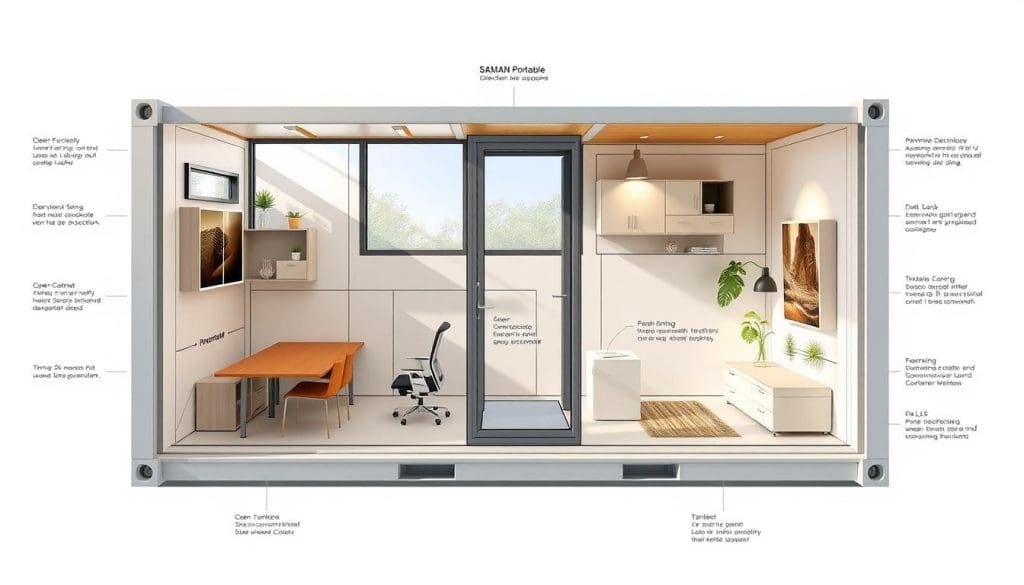
Sustainable Features of Container Office Spaces
Modern businesses are focusing more on sustainable office design. Container offices lead the way with their eco-friendly features. They support sustainable construction and efficient operations.
Energy Efficiency Solutions
Container offices use energy-saving solutions to cut down on environmental harm. They often have solar panels for clean energy, LED lighting for less power use, and smart climate control for better temperature management. These features help lower energy use, saving money and reducing carbon emissions.
Eco-friendly Materials and Practices
- Using containers is a green choice, as it reuses materials that might otherwise be wasted.
- Construction uses recycled steel, sustainable wood, and low-VOC paints to reduce environmental impact.
- Building practices focus on waste reduction and material reuse, making the process more eco-friendly.
Green Building Certifications
Many container offices aim for green building certifications like LEED. This shows their dedication to being eco-friendly. These certifications prove the offices’ energy efficiency, water saving, and material reduction.
Container offices are not just good for the planet. They also save money in the long run and improve the health and happiness of their workers.
Innovative Design Trends in Shipping Container Offices
In recent years, the trend of transforming shipping containers into functional office spaces has gained remarkable popularity, driven by the growing need for sustainable and adaptable work environments. Shipping container office layouts showcase an innovative approach to workspace design, allowing businesses to realize efficient, flexible, and eco-friendly solutions. By repurposing these containers, architects and designers are not only reducing waste but also creating unique spaces that challenge conventional office aesthetics and functionality.
One of the standout features of shipping container office layouts is their modularity. These containers can be easily combined or stacked to create larger workspaces, offering a high degree of customization to meet diverse business needs. This flexibility not only accommodates various team sizes but also allows companies to explore creative configurations that encourage collaboration and productivity. Innovative designs often incorporate open-plan areas alongside private offices, meeting rooms, and communal spaces, all within a compact footprint, promoting a harmonious work-life balance.
Furthermore, shipping container offices often incorporate green building practices that enhance their environmental performance. Designers frequently integrate features such as solar panels, green roofs, and energy-efficient insulation, reducing their carbon footprint while creating a healthier indoor environment. The use of reclaimed materials and upcycled furnishings adds an additional layer of sustainability, aligning with modern ecological standards and conscious consumerism. These elements not only contribute to a visually appealing design but also signal to employees and clients that the business values sustainability.
In conclusion, the innovative design trends in shipping container offices represent a significant shift in how we conceptualize workspaces. By embracing the distinctive characteristics of shipping containers and prioritizing sustainability, organizations can create dynamic and functional environments that foster creativity and collaboration. As this movement gains traction, we can expect to see even more creative approaches to shipping container office layouts, further transforming the landscape of modern workspaces.
Stay ahead of the curve with our cutting-edge container office designs 2024 featuring smart, sustainable solutions.
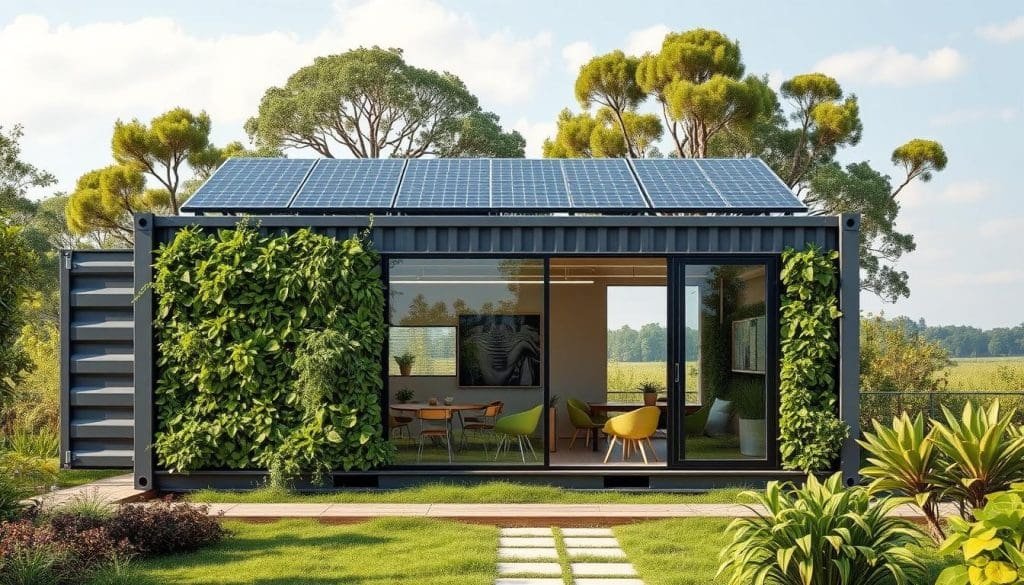
Space Planning and Interior Optimization
Creating efficient work environments is key. Container office interior design and office space optimization play a big role. By planning the layout well, businesses can make the most of a shipping container’s space.
Maximizing vertical space is important. Use shelving, wall-mounted equipment, and modular furniture. This frees up floor space for workstations, collaborative areas, and storage.
Choosing multifunctional furniture, like desks with storage, also helps. It makes the most of the available space.
- Utilize vertical space with shelving and wall-mounted equipment
- Incorporate modular and multifunctional furniture for increased flexibility
- Designate specific zones for different activities, such as individual work, meetings, and breakout areas
For bigger container offices, open-plan designs work well. They improve workflow and encourage teamwork. Think about lighting, color, and acoustics to boost productivity and employee happiness.
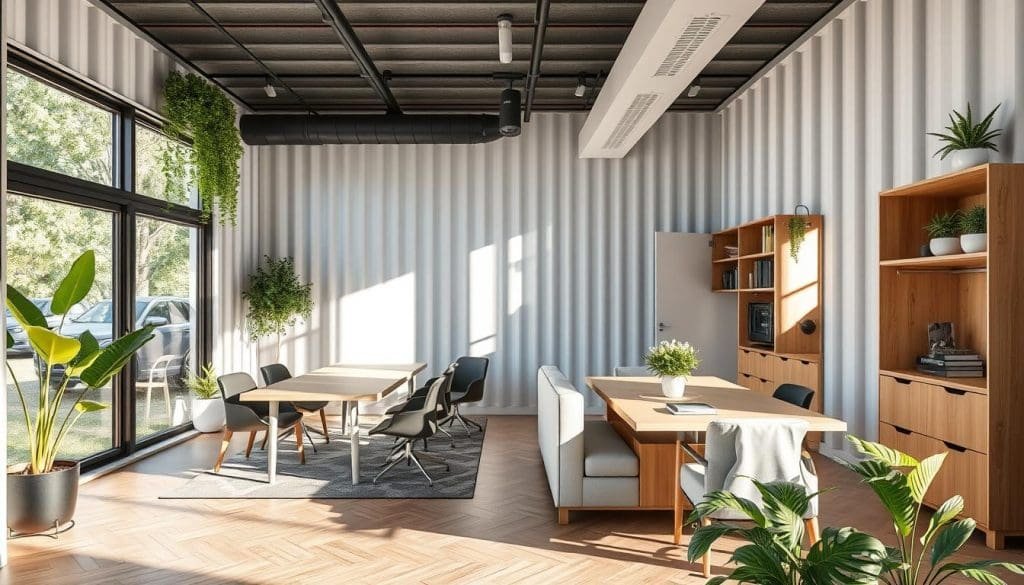
Focus on space planning and interior optimization for a successful container office. It will meet your team’s needs and help your business thrive.
Cost Analysis: Container vs Traditional Office Construction
Choosing a modern office space often leads to a cost comparison between shipping container offices and traditional buildings. Container offices are more affordable upfront. A standard shipping container costs between $3,000 and $6,000. This is much less than the $300 per square foot needed for traditional offices.
Initial Investment Breakdown
Buying a container is just the start. The cost for making it into an office can be from a few thousand to over $10,000. This depends on how much you need to change it. Setting it up costs between $500 to $2,000, as you can place it on solid ground easily.
Finishing the inside can cost from $2,000 for simple options to over $10,000 for luxury.
Long-term Financial Benefits
Container offices also save money in the long run. They cost less to maintain because they’re made of durable steel. Setting up utilities can cost between $1,000 to $5,000.
The design of container offices makes it easy to grow or move them. This saves money over time compared to traditional offices.
Maintenance Considerations
Maintenance for container offices is usually cheaper. But, you should think about the cost of special changes and moving it. Still, a well-kept container office can last 20 to 30 years. This makes them a smart choice for businesses looking to save money.
Discover how shipping container office plans can save costs while offering scalable and modern workspace solutions.
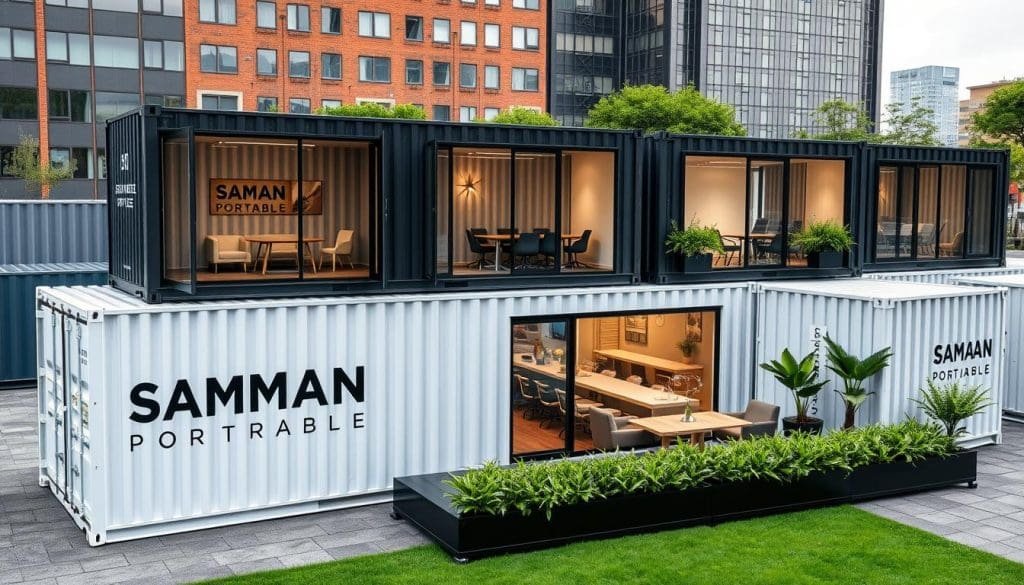
Single Container Office Configurations
Single container offices are great for small businesses or solo workspaces. They are designed to be functional yet professional and comfy. A 20ft container might have a main work area, a small meeting space, and storage. A 40ft container can add a kitchenette or restroom.
Designs aim to use natural light and save space. They balance work and relaxation areas. Plus, these offices are easy to move, perfect for construction and event teams.
Turning a shipping container into an office saves money. It uses a ready-made structure and can be customized. These offices also handle harsh weather well, great for remote areas.

There are many ways to set up a single container office. You can add bathrooms, storage, and kitchenettes. They come with windows, secure doors, climate control, LED lights, and lots of outlets.
Compact office design also focuses on safety. This includes locks, metal screens, and door bars to prevent theft and damage. These offices work for many industries, from construction to small businesses.
For compact yet efficient workspaces, check out our 20 ft container office layout plans tailored for startups and small businesses.
Top Industries Benefiting from Container Office Layouts
The innovative use of shipping container office layouts has transformed the way various industries conceptualize workspaces, blending functionality with sustainability. These modular structures, often designed from repurposed shipping containers, offer a versatile solution to the increasing demand for efficient office space in urban environments. With their unique design and adaptability, shipping container offices are becoming increasingly popular across diverse sectors, enabling companies to maximize their operational capabilities while reducing environmental impact.
One of the most prominent industries benefiting from shipping container office layouts is the tech sector. As startups and established companies alike seek modern, flexible spaces that can be tailored to their specific needs, the adaptability of container offices offers an attractive solution. These spaces can be easily customized with technology-rich environments conducive to collaboration and creativity. In addition, tech companies often prioritize environmental responsibility, making the use of repurposed shipping containers a compelling choice that aligns with their values.
The construction industry also stands to gain significantly from these innovative office layouts. With the need for temporary offices at job sites or during projects, shipping container offices offer a robust and mobile alternative. Their durability and ease of installation ensure that construction firms can maintain a productive workspace regardless of the project’s location or timeline. Furthermore, these container offices can be equipped with essential amenities, creating a comfortable environment for workers while adhering to strict industry regulations.
Educational institutions are another sector reaping the benefits of shipping container office layouts. As schools and colleges seek budget-friendly solutions to expand their facilities or create dedicated learning environments, repurposed containers provide an efficient and cost-effective way to create classrooms, offices, or even collaborative spaces. The modularity of these designs allows for easy scalability, accommodating the growing student population or fluctuating program needs. Moreover, incorporating sustainable practices through the use of shipping containers inspires a generation of students to understand and value environmental stewardship, making it a forward-thinking choice for educational settings.
Multi-Container Complex Designs
As businesses grow, they need more space. Multi-container office complexes are a great solution. They let companies create spaces that grow with them. These designs use shipping containers to build tall or wide spaces, offering lots of room and flexibility.
Stacking and Connecting Methods
Building a multi-container office complex requires smart stacking and connecting. Stacking units vertically makes tall buildings. Side-by-side units create big, open spaces. These methods can be mixed to make spaces for all kinds of business needs, like private offices and meeting rooms.
Modular Expansion Options
- Shipping containers are easy to add to, making it simple to grow your office. New units can be added without interrupting work.
- This way of building offices is cost-effective and efficient. It helps businesses keep their office space up-to-date as they grow.
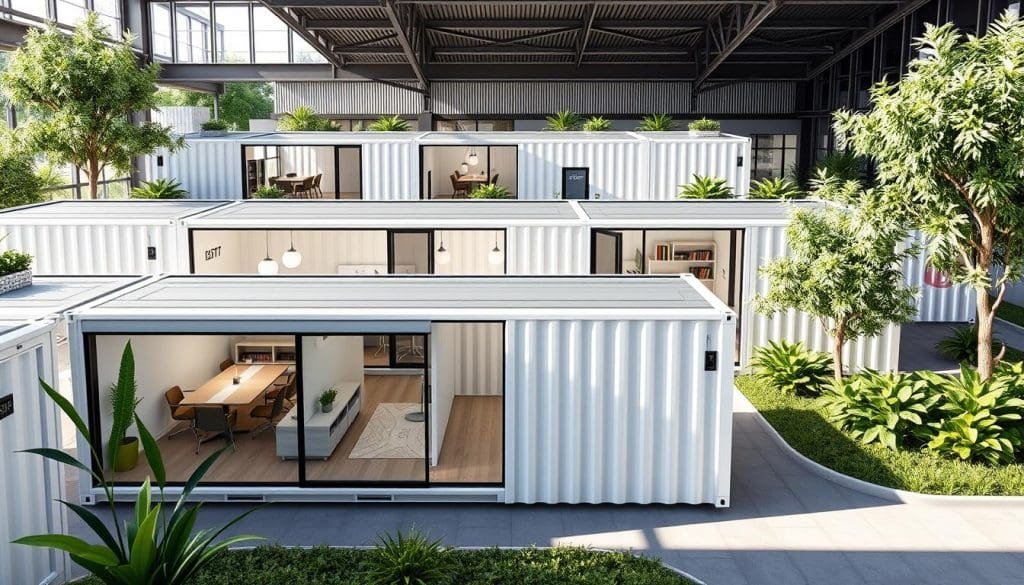
Using shipping containers, businesses can make unique office spaces. They can stack or connect units in many ways. This makes it a great choice for companies looking to improve their office space and plan for the future.
Our 40 ft container office layout plans provide spacious and efficient designs ideal for expanding business operations.
Essential Infrastructure and Utilities Integration
Creating functional container office spaces means integrating key infrastructure and utilities. This includes setting up strong electrical systems, plumbing, HVAC, and fast internet. These are crucial for a modern work setup.
Adding solar power and rainwater harvesting systems makes these container office spaces more sustainable. It’s also important to have good insulation and ventilation. This keeps the work area comfortable, with the right temperature and air quality.
- Electrical systems: Designing and installing reliable power distribution, lighting, and backup power solutions.
- Plumbing: Incorporating efficient water supply and drainage systems, including provisions for sinks, bathrooms, and appliances.
- HVAC: Implementing climate control systems to regulate temperature, humidity, and air circulation for occupant comfort.
- Internet connectivity: Ensuring high-speed internet access and IT infrastructure to support modern business operations.
Utility integration must follow local building codes and safety standards. This ensures the container office space is safe and works well. Adding smart building technologies can also improve energy use and comfort for everyone.
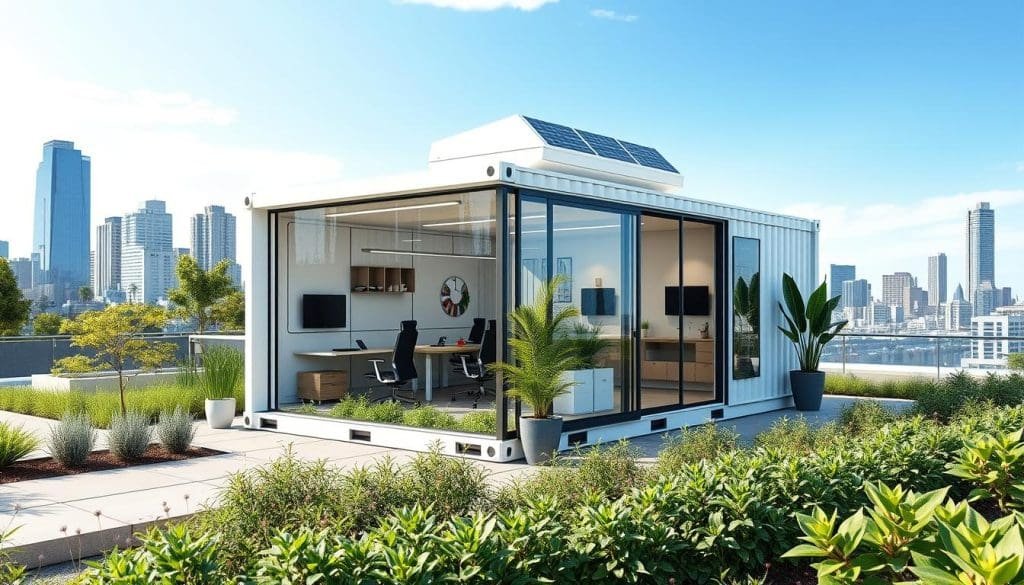
By focusing on these key infrastructure and utilities, container office spaces can offer a smooth and efficient work area. They meet the needs of today’s businesses.
How to Choose the Best Container Office Layout for Your Business
Choosing the best container office layout for your business is critical to maximizing functionality while ensuring a seamless flow of operations. Shipping container offices are versatile and can be customized to accommodate various business needs. From startups seeking a unique work environment to established firms looking for a temporary solution, selecting the right shipping container office layout can impact everything from employee productivity to client perception. The layout should reflect not only your operational processes but also the culture you want to cultivate within your space.
When exploring container office designs and plans, it is essential to consider the specific activities that will take place within the space. For instance, if your business requires frequent collaboration among team members, an open-plan design with a central meeting area might be most beneficial. Alternatively, if privacy for consultations or focused work is paramount, layouts that incorporate separate offices or cubicles could prove more effective. Additionally, thinking about natural light and ventilation when placing windows and doors will enhance the comfort of the workspace, making it a more inviting atmosphere for both employees and clients.
Flexibility is another important aspect to keep in mind when developing your shipping container office plans. As your business evolves, you may find that your space needs to adapt accordingly. Opting for modular designs allows for easy expansion or reconfiguration without needing to start from scratch. Moreover, incorporating multifunctional furniture can make better use of limited space, enabling areas to serve multiple purposes without sacrificing comfort or efficiency.
Lastly, budget constraints and operational requirements should guide your decision-making process. While it can be tempting to go for highly complex designs, sometimes simpler layouts can meet your needs effectively at a reduced cost. Conducting thorough research on different container office designs, assessing the pros and cons of each option, and even consulting with industry experts can provide invaluable insights. By taking a strategic approach to your shipping container office layout, you can create a conducive environment that supports your business goals and fosters employee satisfaction.
Creating Collaborative Spaces in Container Offices
Designing container office spaces for teamwork and creativity is key for today’s businesses. By planning the layout and amenities well, container offices can become places of productivity and new ideas.
Meeting Room Layouts
Meeting rooms in container offices use smart furniture and tech to make the most of space. Modular seating arrangements, foldable tables, and sliding partition walls help change the space for different meetings. Built-in video conferencing systems and digital whiteboards make team work easier, even with remote team members.
Breakout Area Designs
- Informal lounge-style seating and writable surfaces spark quick brainstorming and sharing of ideas.
- Modular furniture, like cushioned benches and movable ottomans, supports flexible setups for group talks or solo work.
- Adding natural elements, such as plants and daylight, makes the space refreshing and inspiring, boosting creativity.
By carefully designing container office collaboration spaces and office meeting room layouts, companies can create a lively and team-focused work area. This is possible even in the small space of a shipping container.
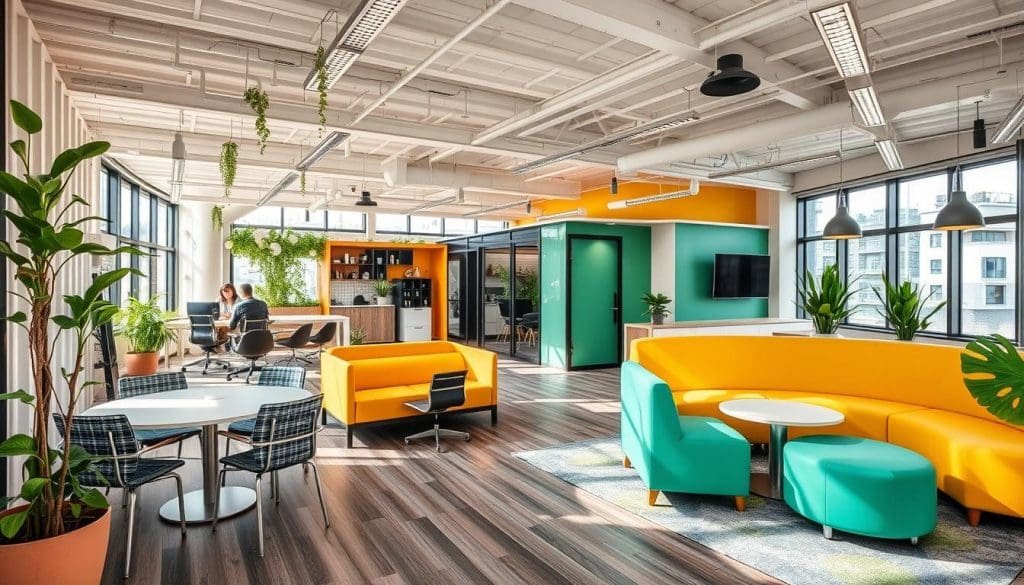
Climate Control and Ventilation Solutions
Keeping a work environment comfortable and productive is key for any office, especially those in shipping containers. Good climate control and ventilation are vital. They ensure comfort all year and the best conditions for employees and equipment.
Insulation is a big deal. Superior R-value of spray foam insulation keeps temperatures stable, even in harsh weather. This is crucial for container offices with sensitive electronics or equipment.
- A PTAC or two-ton industrial air conditioner is often suggested for cooling. It keeps the workspace cool and reliable.
- In very hot or cold climates, multiple layers of spray foam insulation might be needed. This helps keep the inside comfortable.
- A wall-mounted PTAC unit can be added to the design. It provides climate control like traditional offices.
Ventilation is also key in container office design. An exhaust fan up to three-feet wide is recommended for tasks like engine or battery testing. It ensures good air flow and filtration.
By using these climate control and ventilation solutions, designers can make container offices comfortable, productive, and energy-saving. These spaces meet the special needs of businesses and organizations.
Maintaining and Upgrading Container Office Spaces
Container office spaces have gained popularity as a flexible and cost-effective solution for businesses seeking versatile work environments. These innovative setups offer a unique fusion of functionality and sustainability, often repurposing shipping containers to create stylish workspaces. However, maintaining and upgrading these spaces is crucial to ensure they meet the evolving needs of the workforce and remain efficient over time. A thoughtful approach to shipping container office layouts can greatly enhance their usability and aesthetic appeal.
Regular maintenance of container offices should focus on the structural integrity and insulation. Containers can be subject to rust, especially in coastal areas, so regular inspections and repainting as necessary are essential to prolonging their lifespan. Additionally, checking seals around doors and windows can prevent leaks and improve energy efficiency. Beyond structural care, the interior should reflect an inviting work environment; upgrading lighting systems, installing efficient HVAC units, and ensuring adequate ventilation can transform the space into a more comfortable setting, enhancing productivity and employee morale.
When it comes to upgrading container office spaces, it’s important to consider the layout. Shipping container office layouts can be tailored to specific functions, whether it’s a collaborative area, private offices, or meeting rooms. Open-plan designs can encourage communication and creativity, while designated pods can provide privacy for focused work. Utilizing modular furniture that can be easily reconfigured can further maximize flexibility, enabling businesses to adapt to changing team dynamics and workflows. Adding elements like greenery, artwork, and ergonomic furniture can significantly elevate the overall aesthetic and functionality of the workspace.
In summary, maintaining and upgrading container office spaces goes beyond mere aesthetics; it involves strategic planning and consideration of both functionality and employee well-being. By focusing on regular maintenance and thoughtful updates to shipping container office layouts, businesses can ensure these spaces remain appealing and conducive to productivity. This proactive approach not only enhances the operational efficiency of the office but also fosters a vibrant and innovative workplace culture, making container offices a smart choice for the modern workforce.
Optimize your workspace with versatile container office layouts designed for maximum productivity and flexibility.
Legal Requirements and Building Codes
Building container office spaces requires careful attention to legal rules and building codes. Zoning laws differ by place, and some spots need special approvals for container buildings. It’s key to know the safety rules, like how strong the building is, fire safety, and health standards, to keep everyone safe.
Getting the right permits is a big step in building a container office. You’ll need building permits, occupancy certificates, and maybe environmental clearances. Also, making sure the office is accessible for everyone, as the Americans with Disabilities Act (ADA) requires, is a must.
Zoning Regulations
- Zoning laws can affect if you can build a container office in some areas.
- You might need special permissions or variances to use shipping containers for work.
- Talking to local officials and experts is a good idea to understand zoning rules.
Safety Standards
- The container’s structure must meet building codes.
- Fire safety, like fire systems and exits, is very important.
- Good air and light are key for a healthy work environment in a container office.
Permit Requirements
Getting the right permits is crucial for building a container office. You’ll need:
- Building permits
- Occupancy certificates
- Environmental clearances (if needed)
Working with local officials and experts helps make sure you follow all the rules for building a container office.
Container Office Customization Options
Customized container offices offer a wide range of possibilities. Businesses can make their workspace fit their specific needs. This includes everything from exterior designs to interior layouts.
Exterior customizations can make container offices look great. Options include bright paint, architectural cladding, and even rooftop gardens. Inside, you can choose flooring, wall treatments, and custom furniture.
Technology is key in making container offices personal. You can add smart systems, advanced AV, and special workstations. This boosts productivity and teamwork. You can also match the office design with your company’s colors and style.
Container structures are flexible, allowing for unique designs. You can add expandable parts or special layouts. This means you can improve natural light, sound quality, or create a team-friendly space.
Customizing container offices lets businesses create spaces that work well and show off their brand. It helps make a positive work environment for everyone.
Conclusion
Shipping container office layouts are changing how we design workspaces. They offer new, green solutions for businesses everywhere. These structures are flexible, easy to move, and good for the planet.
They have been successfully used in many fields. This shows they can be a great choice instead of old office buildings.
Container offices are getting better with new designs and tech. They are becoming key in cities and remote areas. They use space well, save energy, and are made from eco-friendly materials.
This makes them perfect for today’s businesses. The growth of container offices is fast, with a 7.1% annual increase. This shows more companies want these affordable, flexible workspaces.
As businesses look to save money and the environment, container offices will become even more popular. They are changing how we think about office spaces and work areas.
Learn more About SAMAN Portable and our dedication to providing innovative, sustainable container office solutions.
FAQ
What are the key benefits of container offices?
Container offices are cost-effective and sustainable. They are also flexible, making them great for different business needs. They offer mobility, energy savings, and can be customized to fit your space.
How can container offices be customized?
Container offices can be customized a lot. You can change the outside look and the inside layout. You can also add furniture and technology to make it your own.
What are the core design principles for shipping container office layouts?
The design focuses on using space well and making work areas comfortable. It also includes insulation, ventilation, and wiring. Important things are natural light, storage, and flexible work areas.
How do container offices differ from traditional office construction in terms of cost?
Container offices cost less to start and save money in the long run. They can save on energy and might get tax breaks for being green. But, you need to think about extra costs for changes and moving them.
What are the sustainable features of container office spaces?
Container offices are green because they use energy-saving tech like solar panels and LED lights. They also use eco-friendly materials. Plus, they can get green building certifications like LEED.
How can container offices accommodate collaborative spaces?
Container offices can have cool meeting rooms and areas for team work. They use smart furniture and tech. This helps teams be creative and work well together, even in small spaces.
What legal requirements and building codes must be considered for container office projects?
You need to follow zoning rules, safety standards, and get the right permits. This includes building permits and environmental clearances. Working with experts and local authorities is key for a container office project.
 Container Cafe
Container Cafe